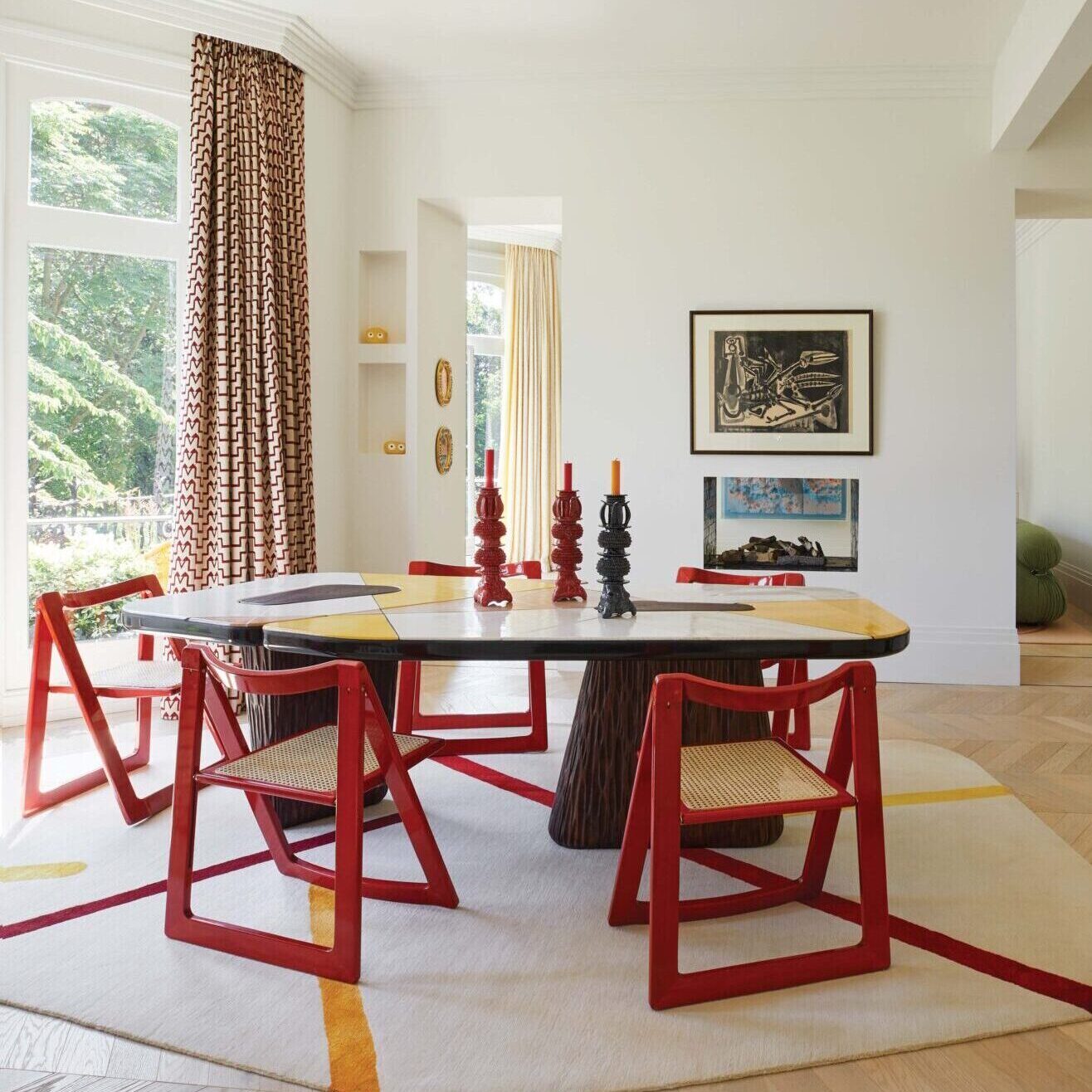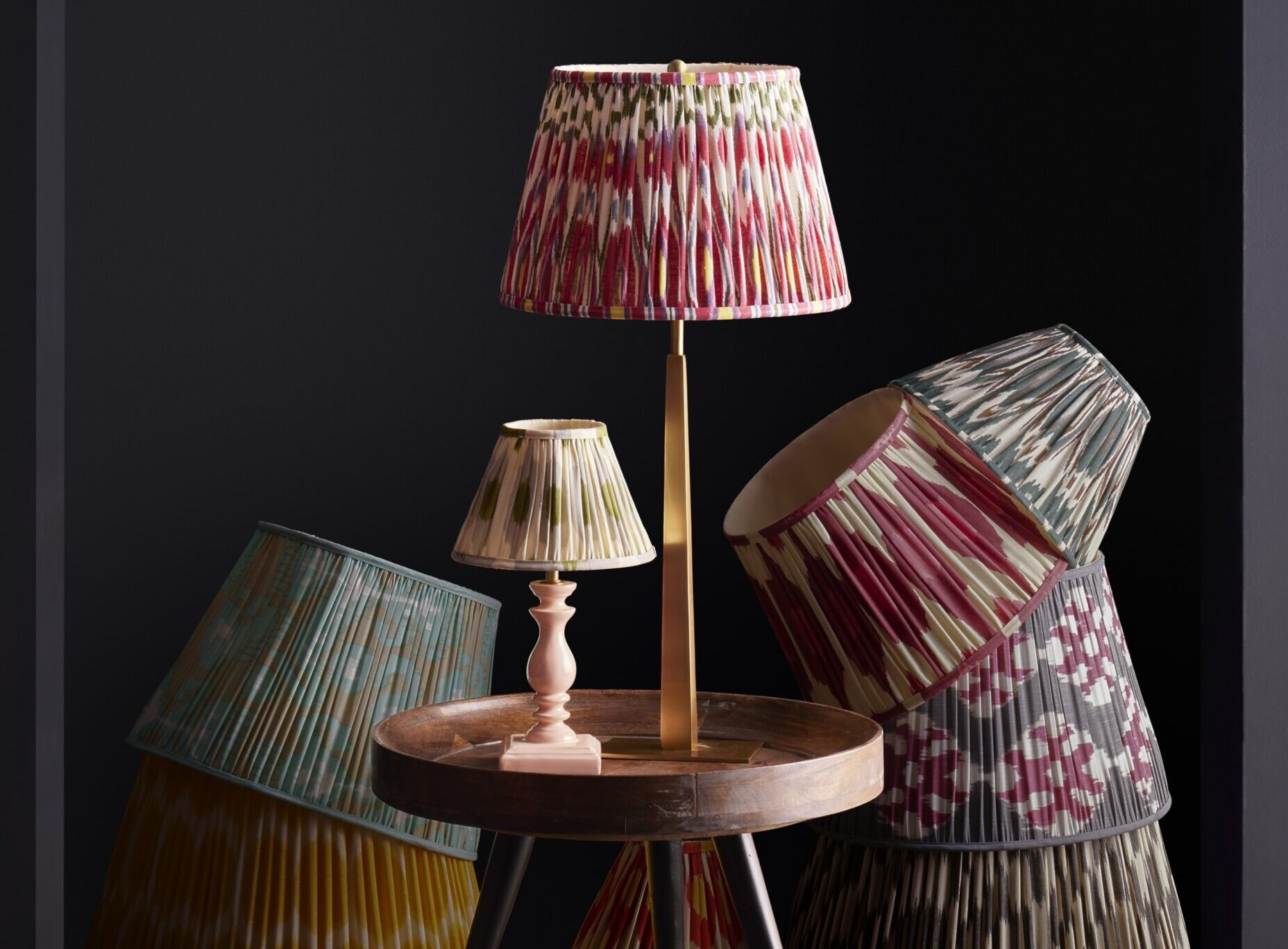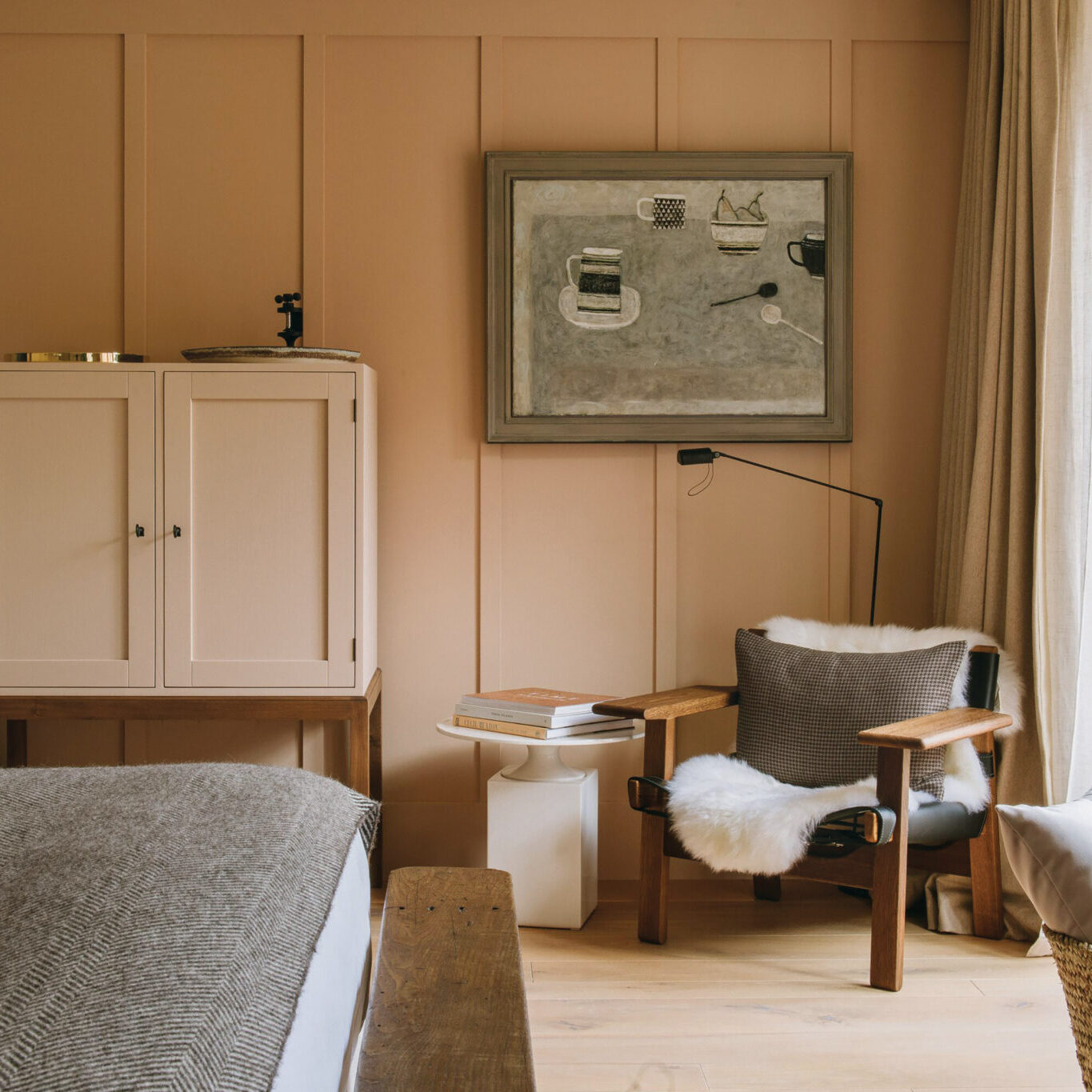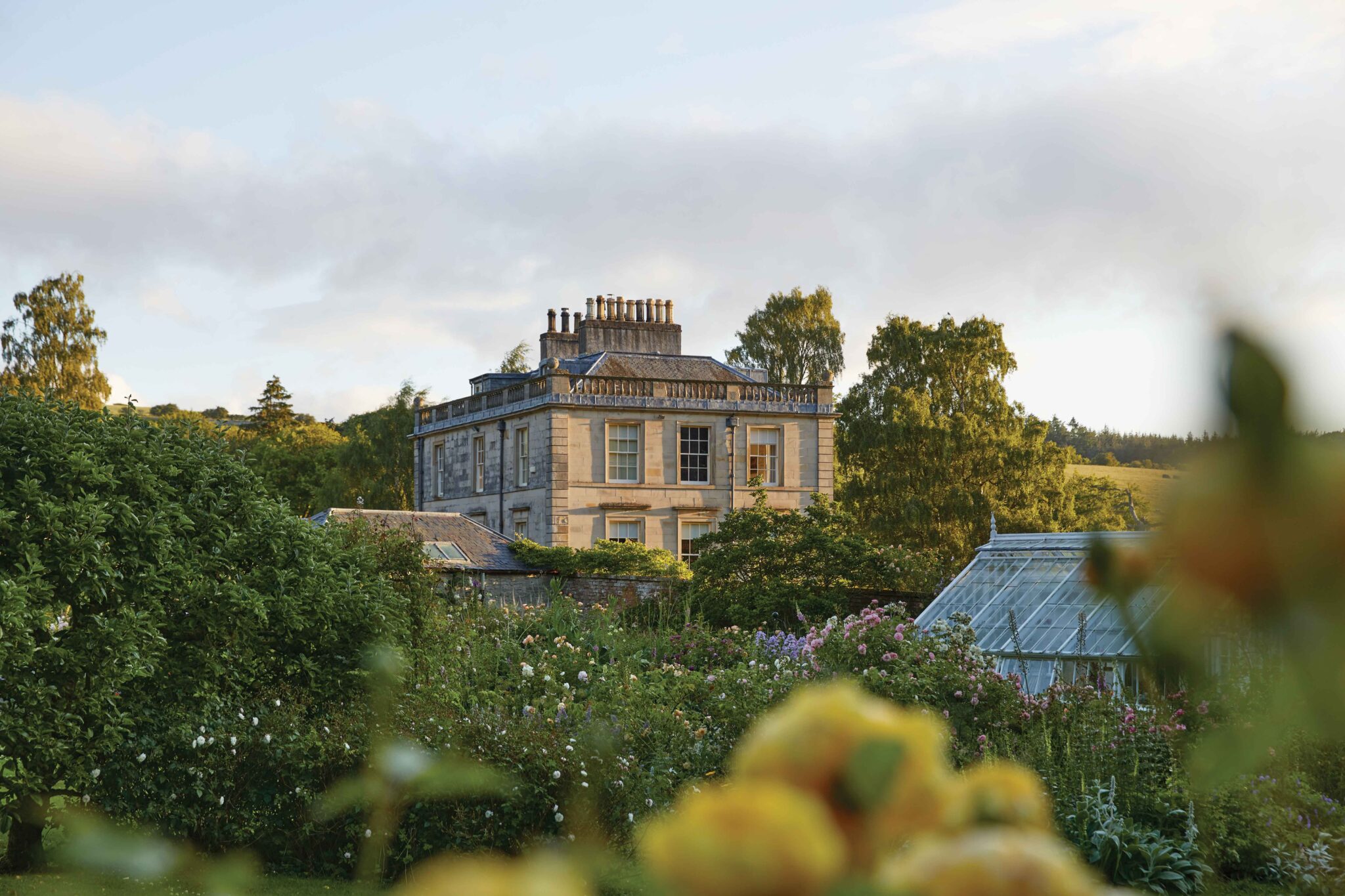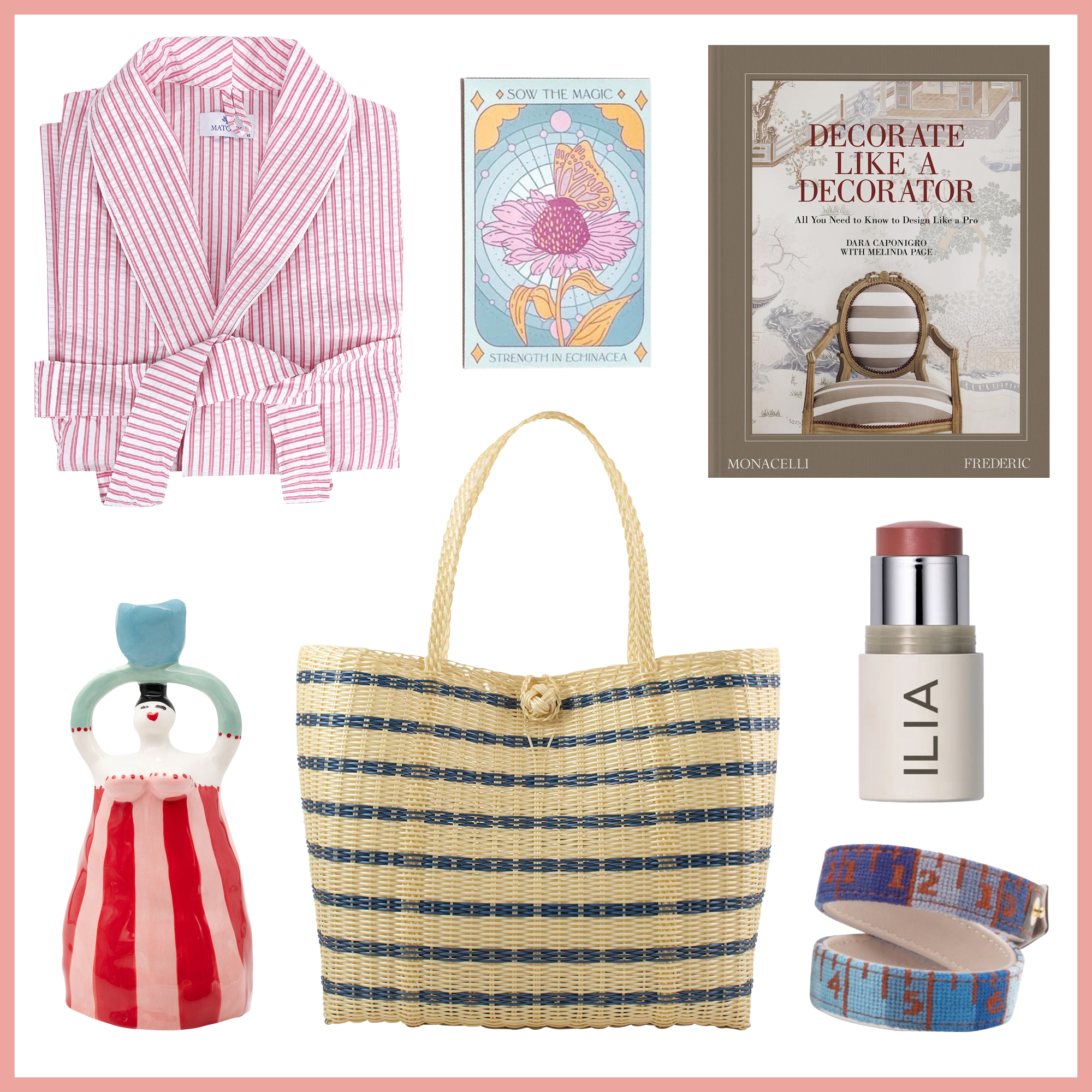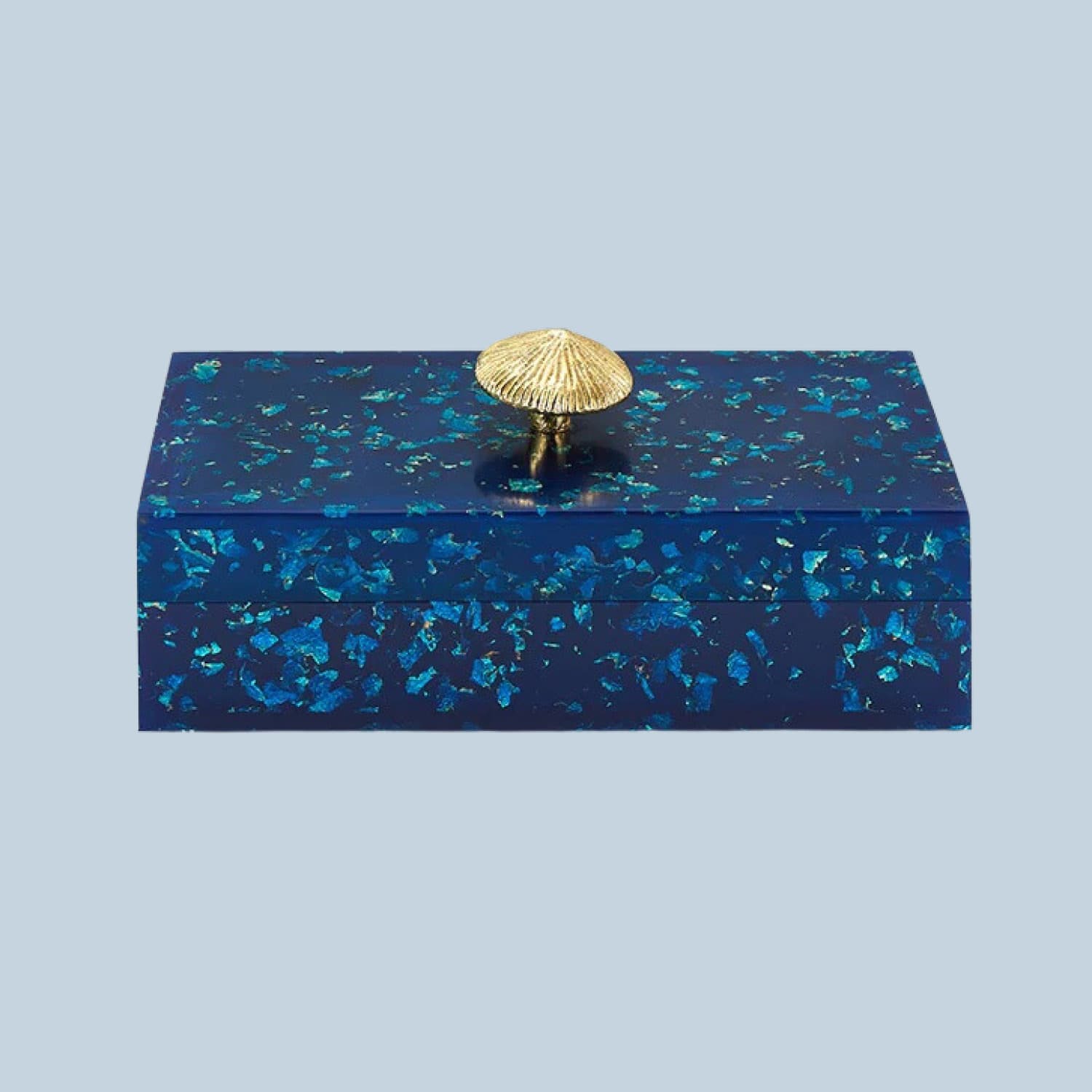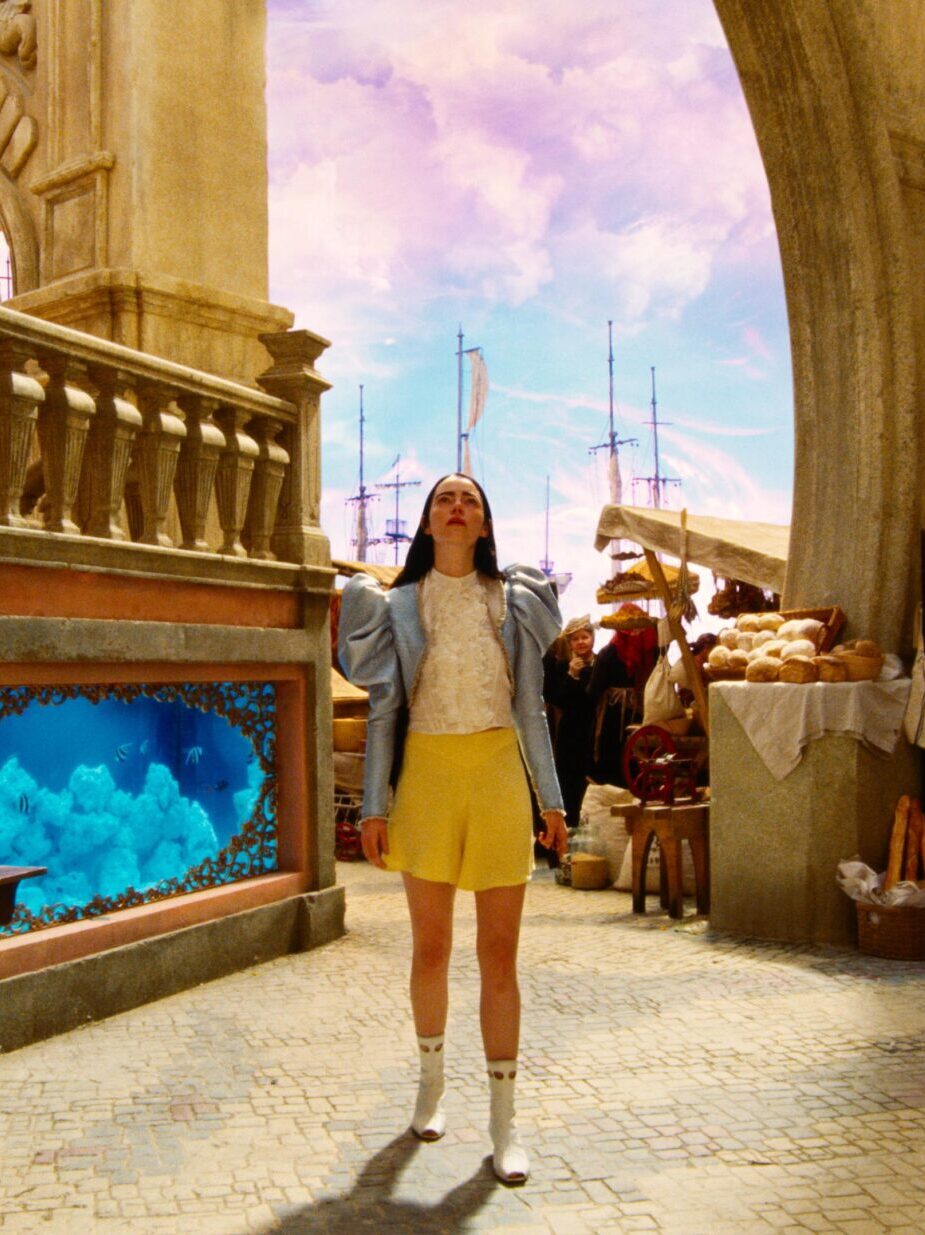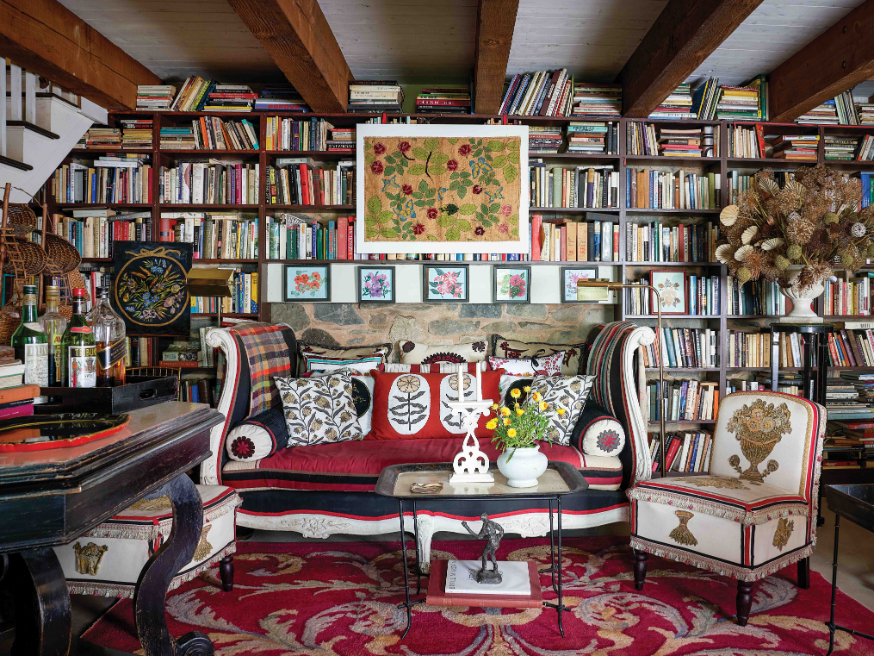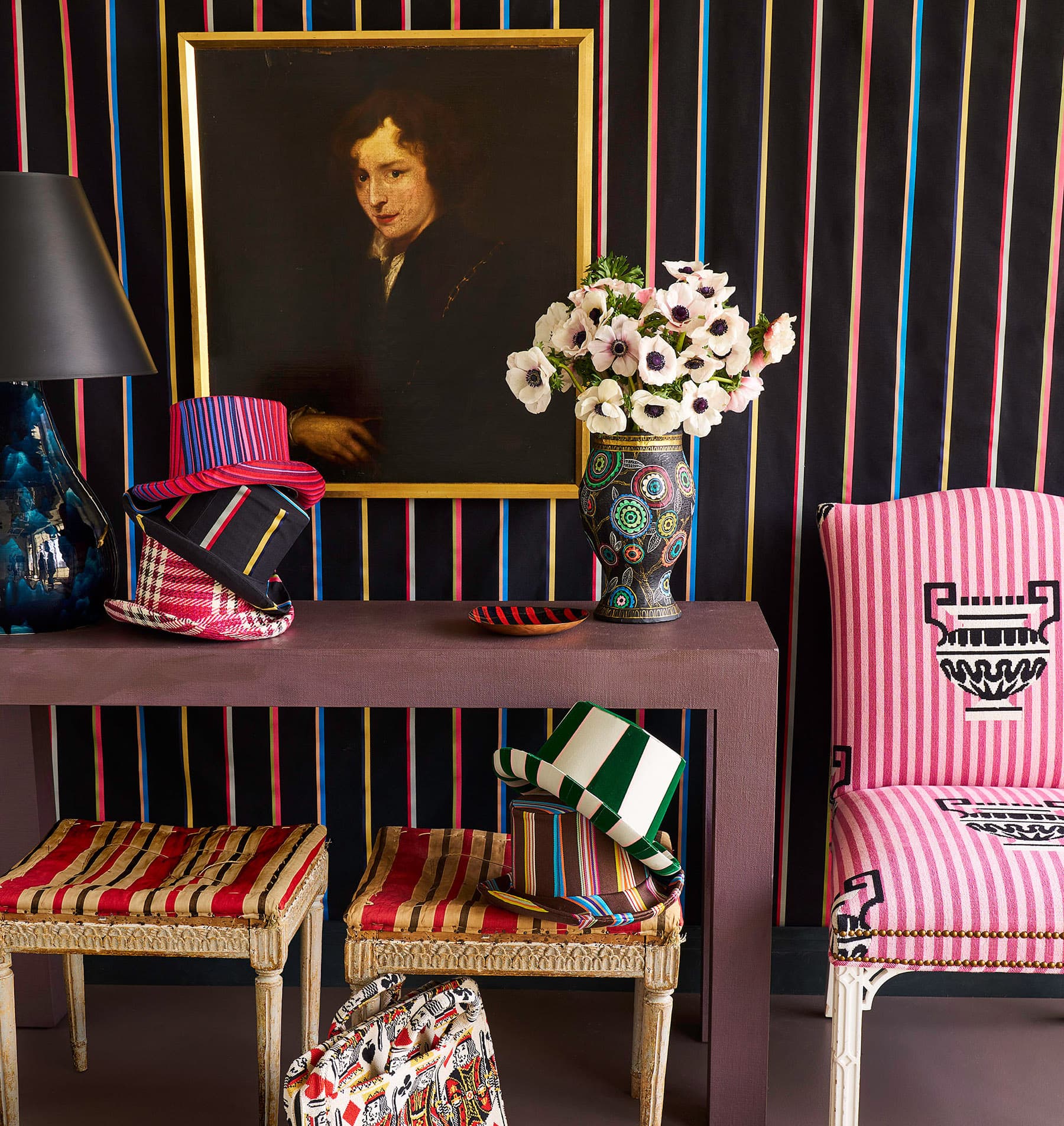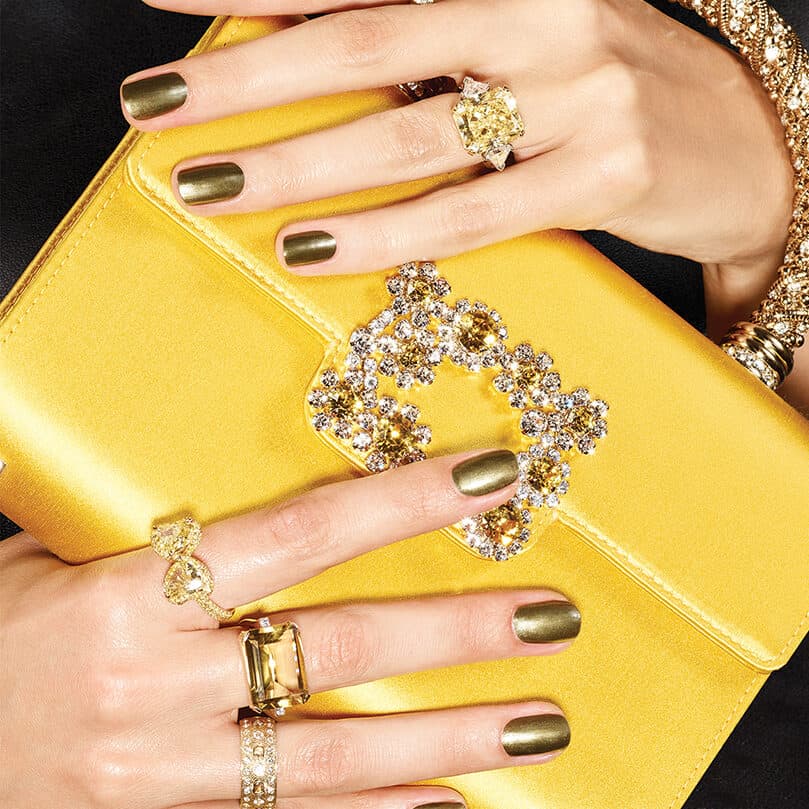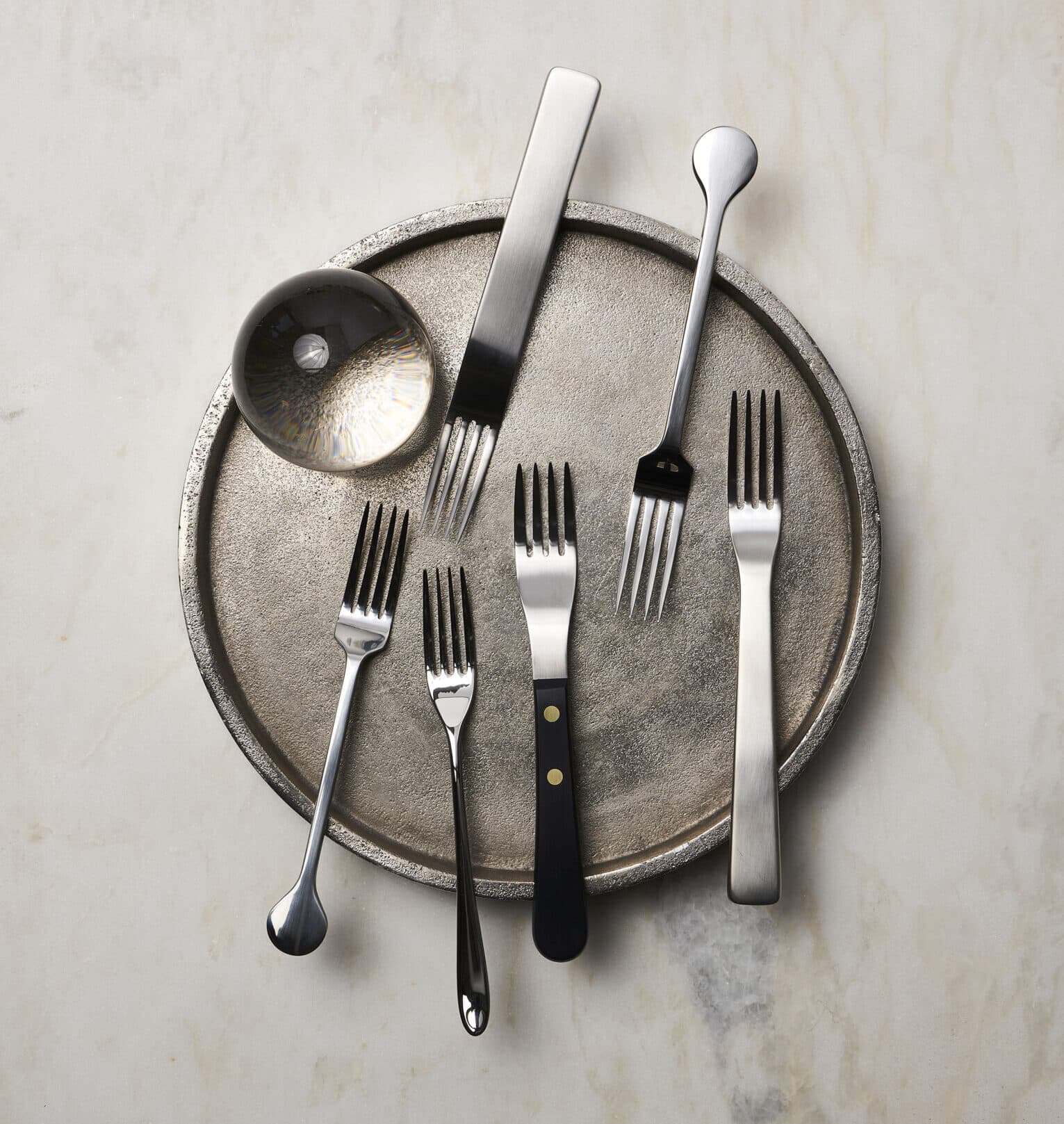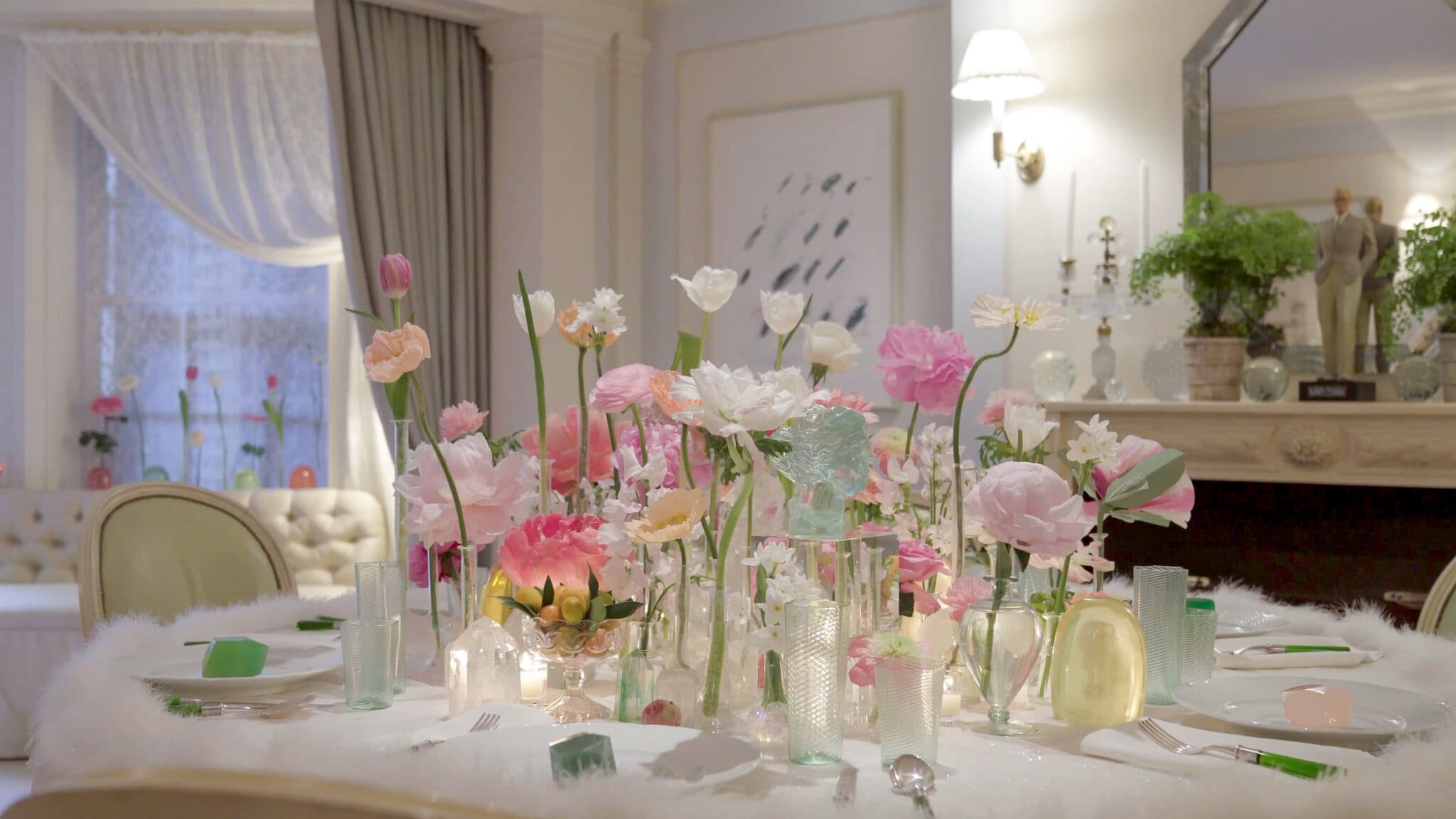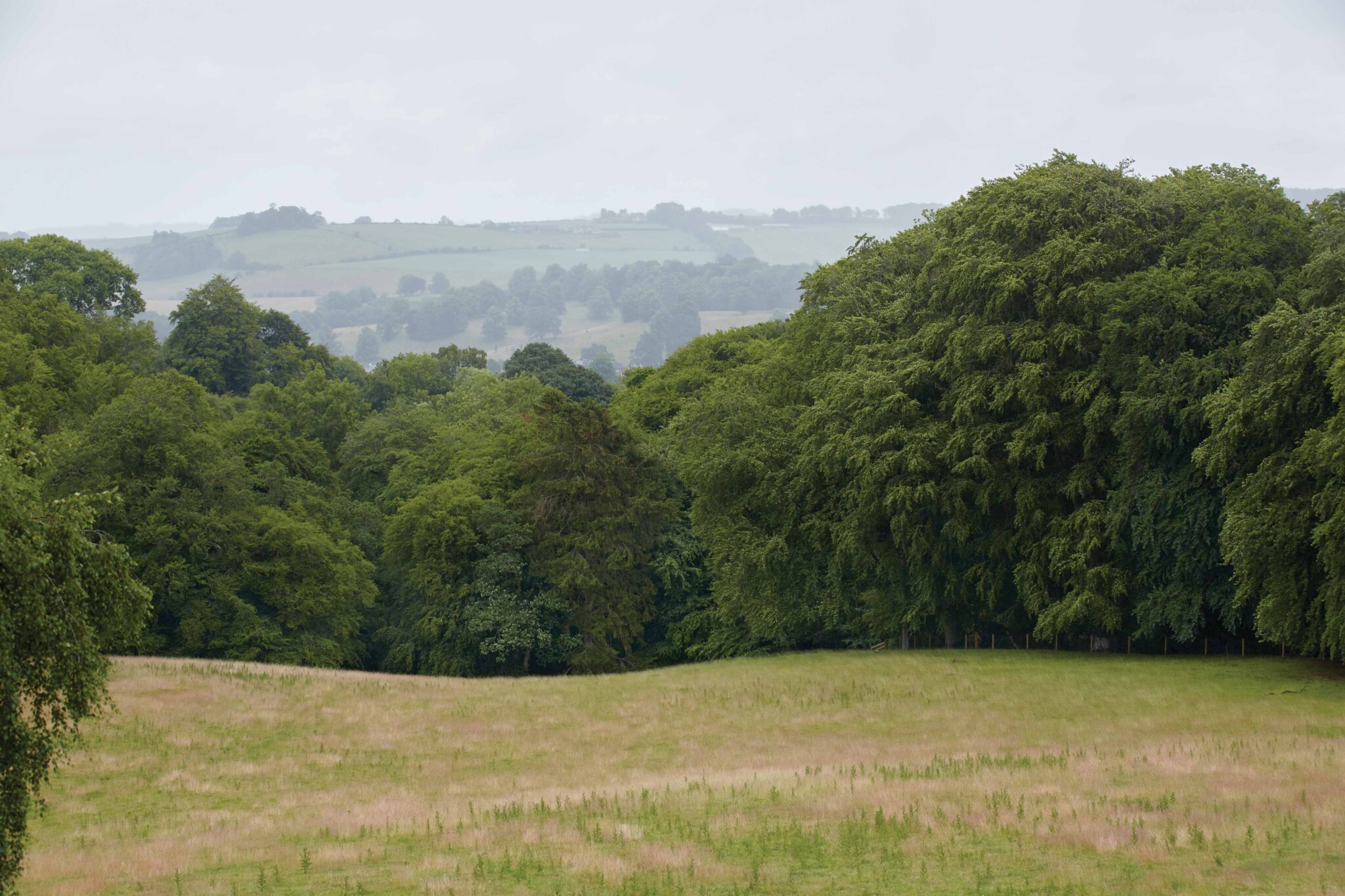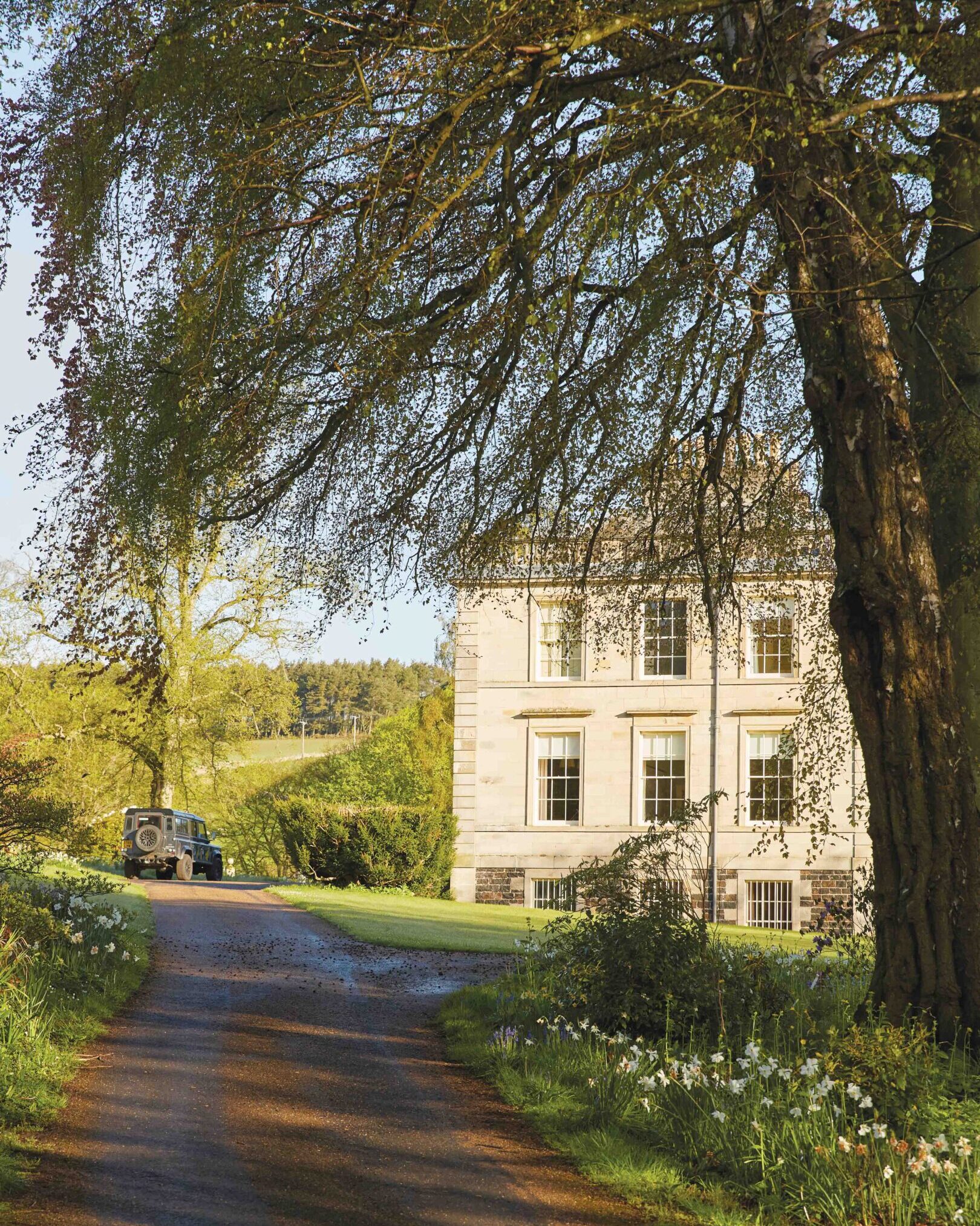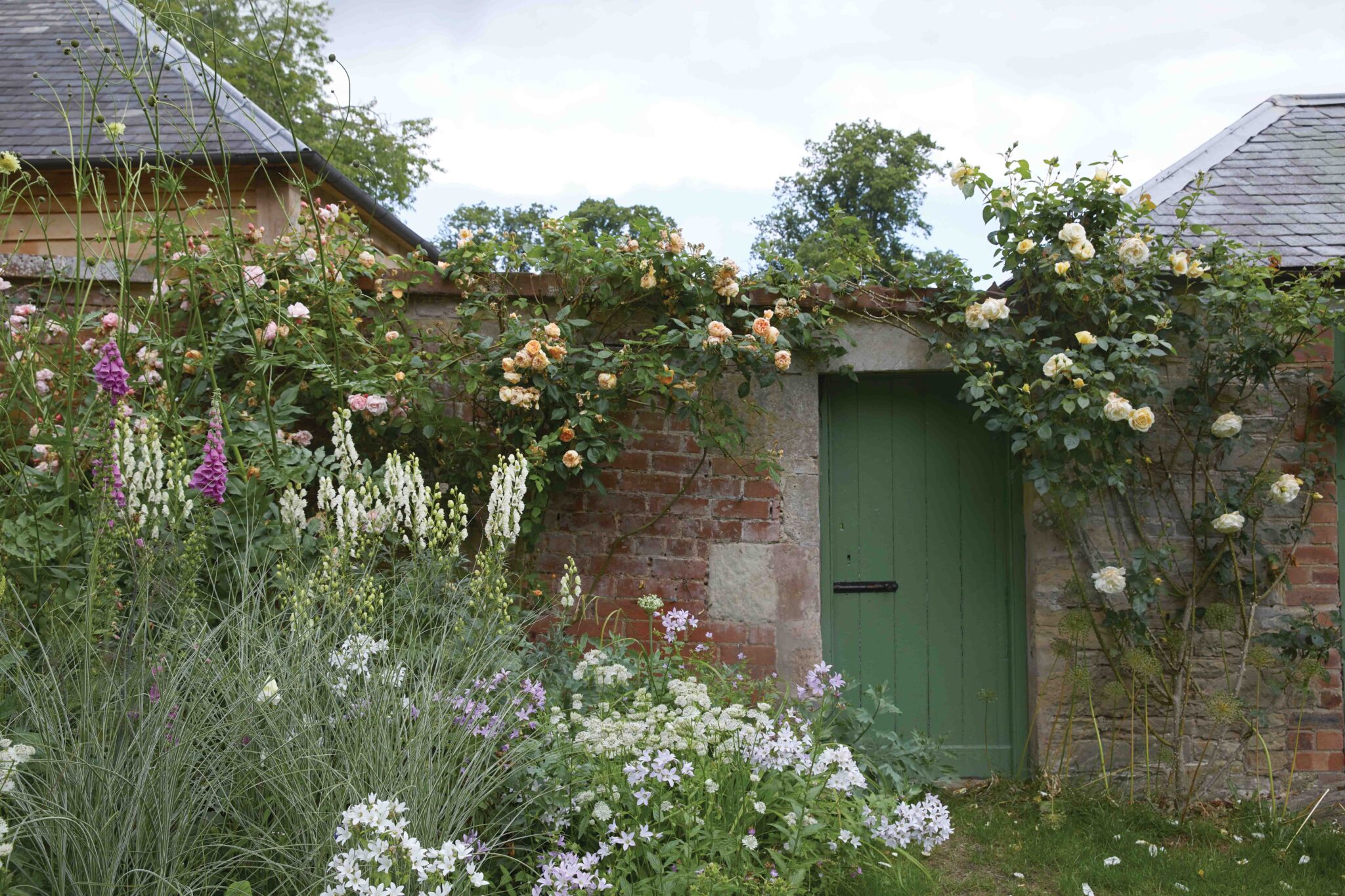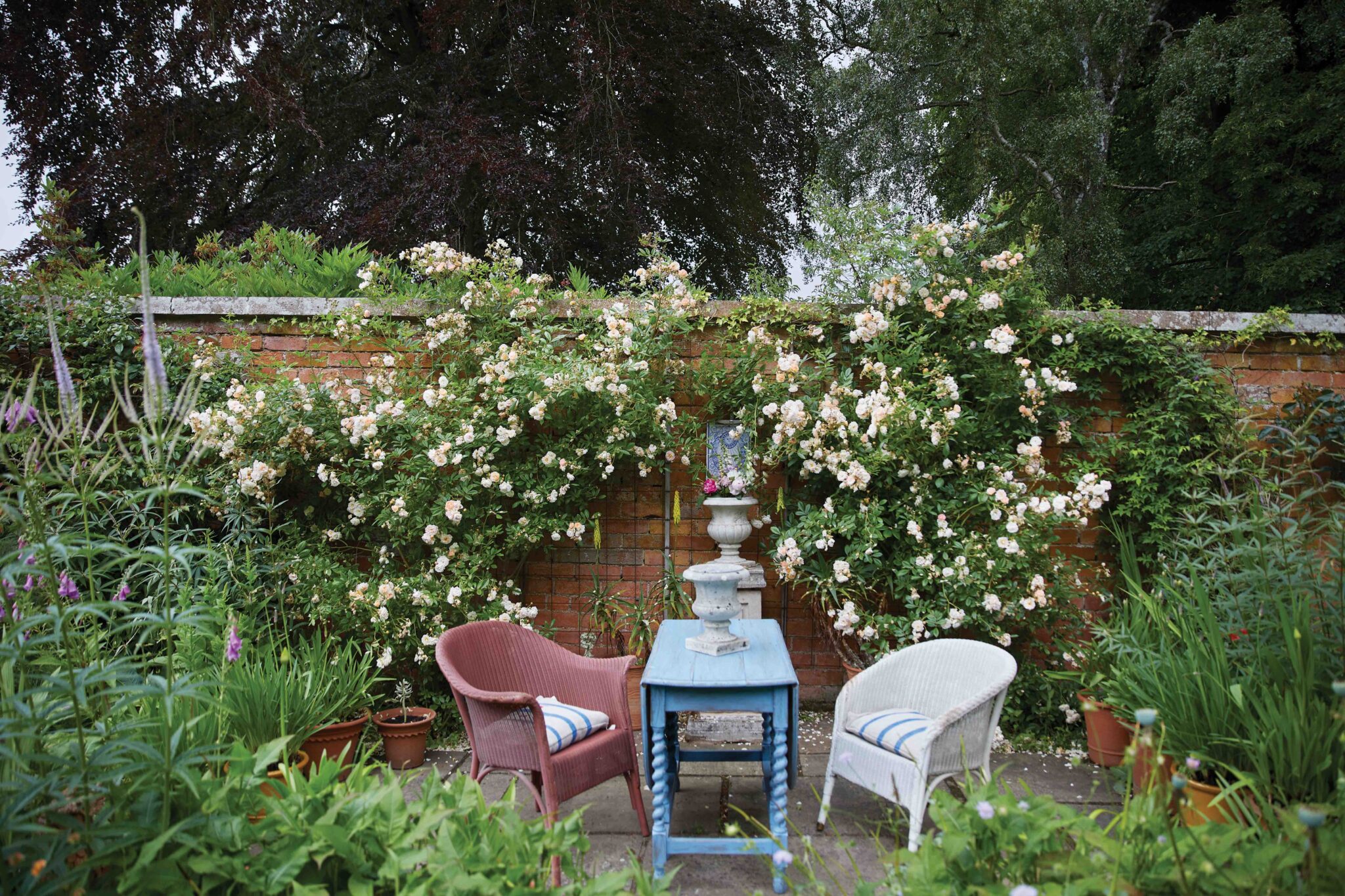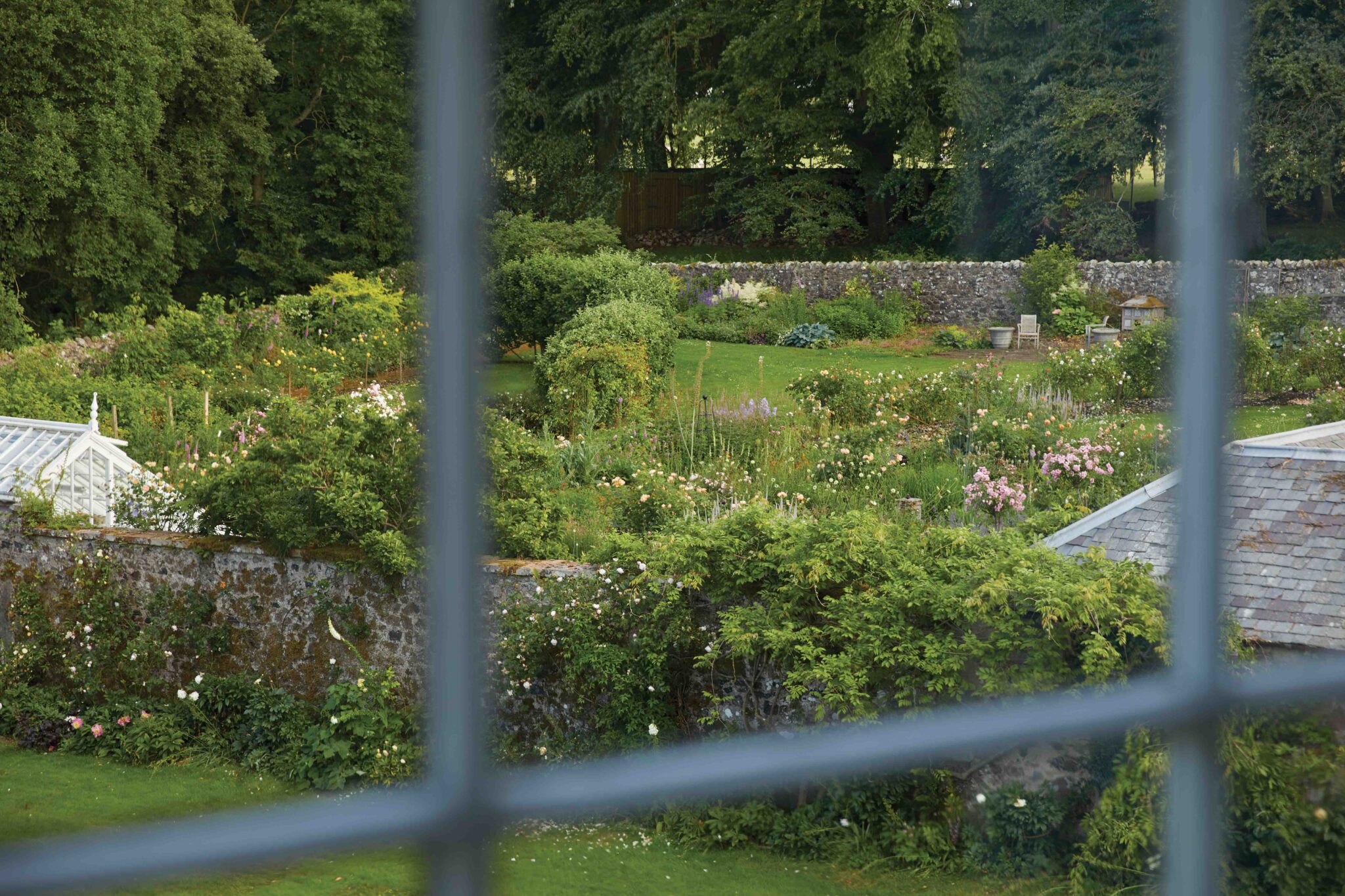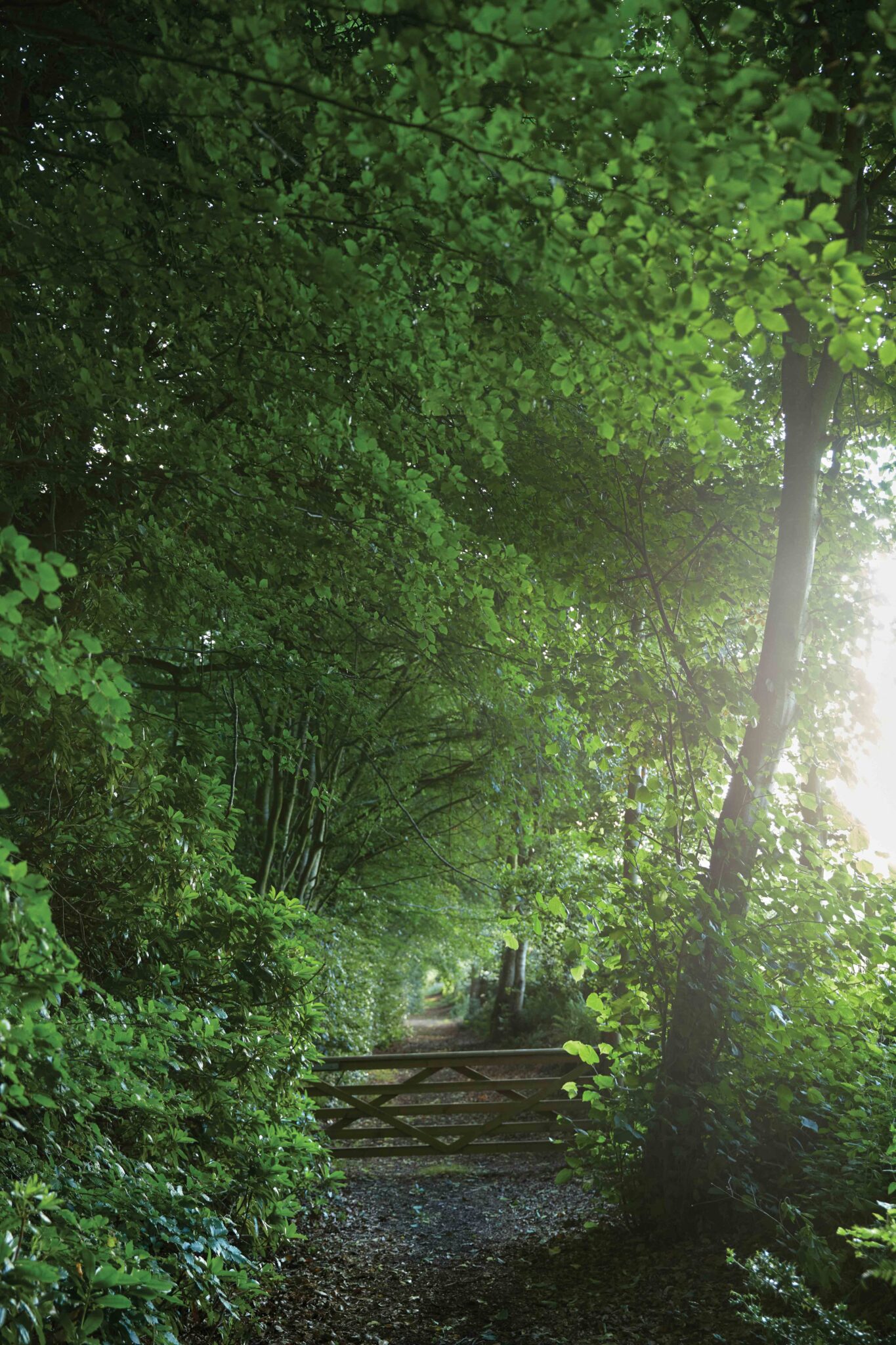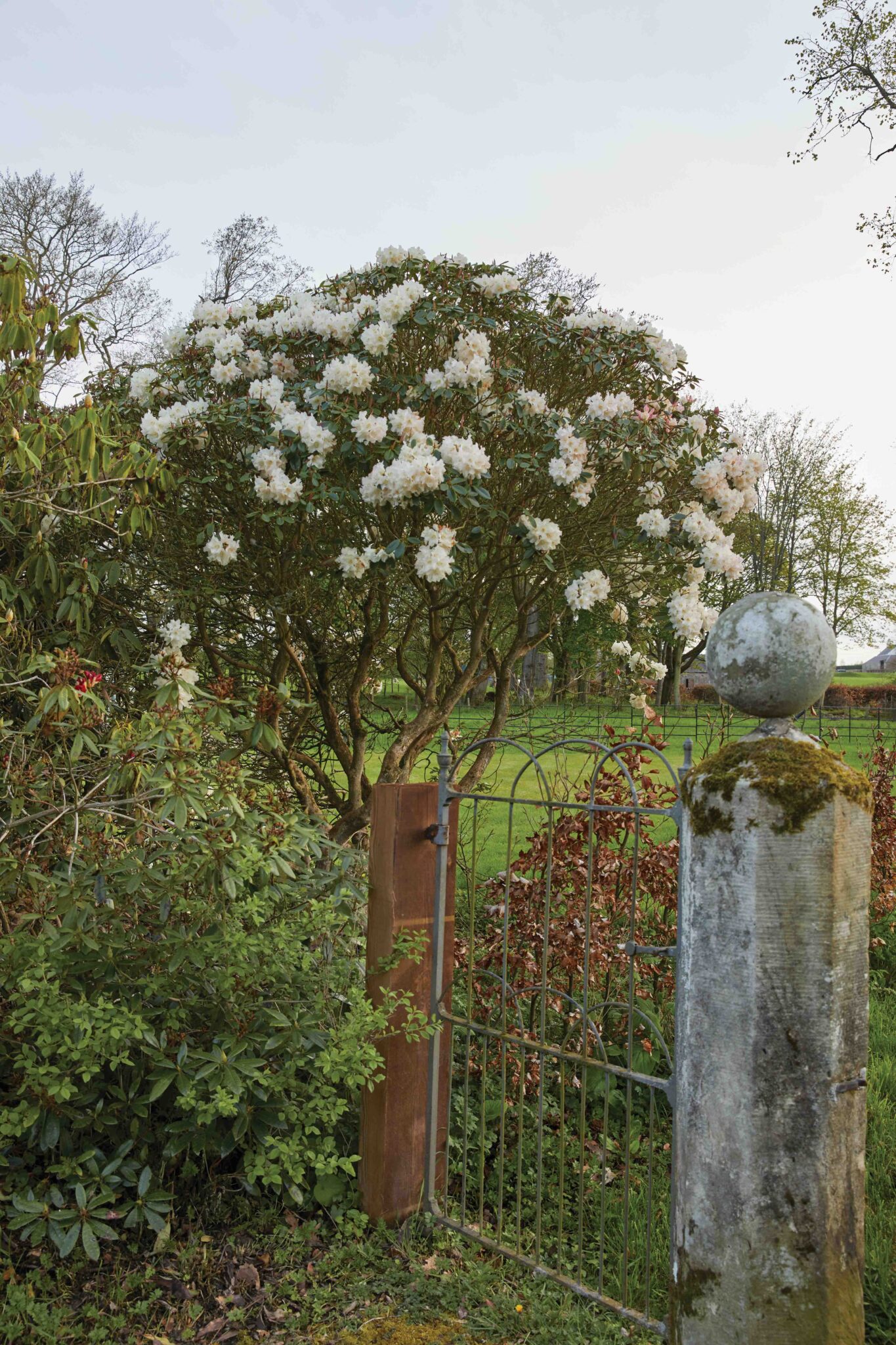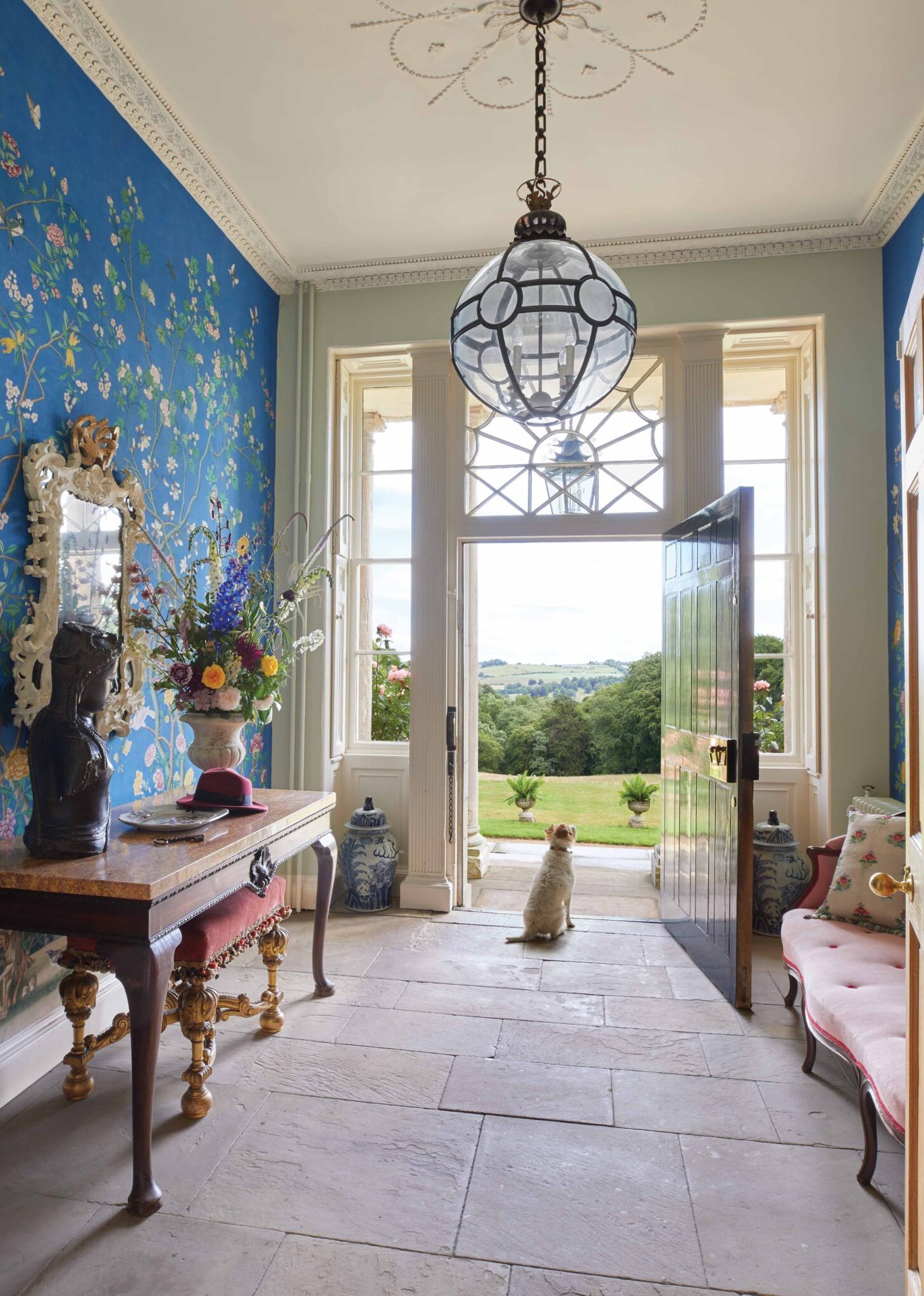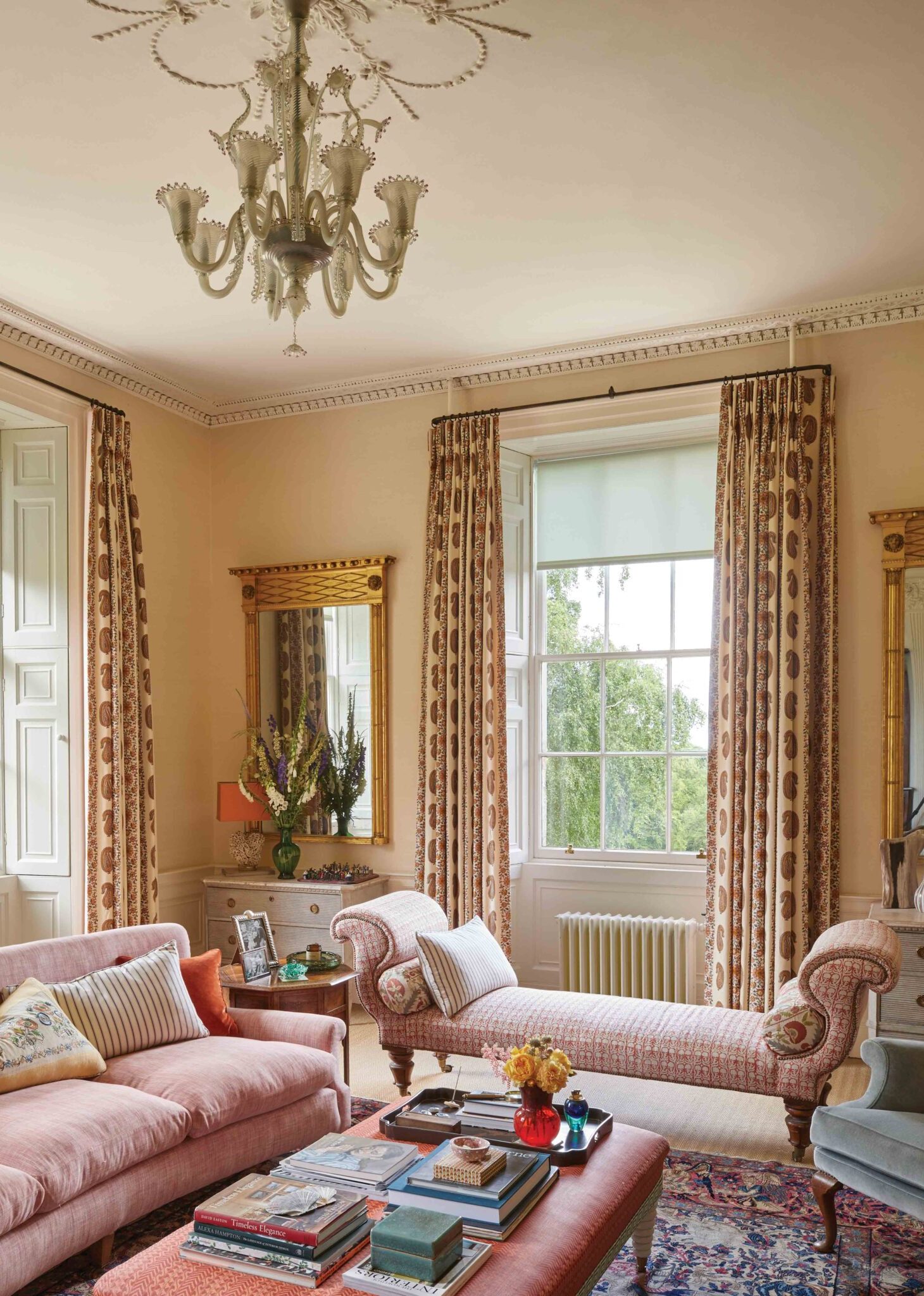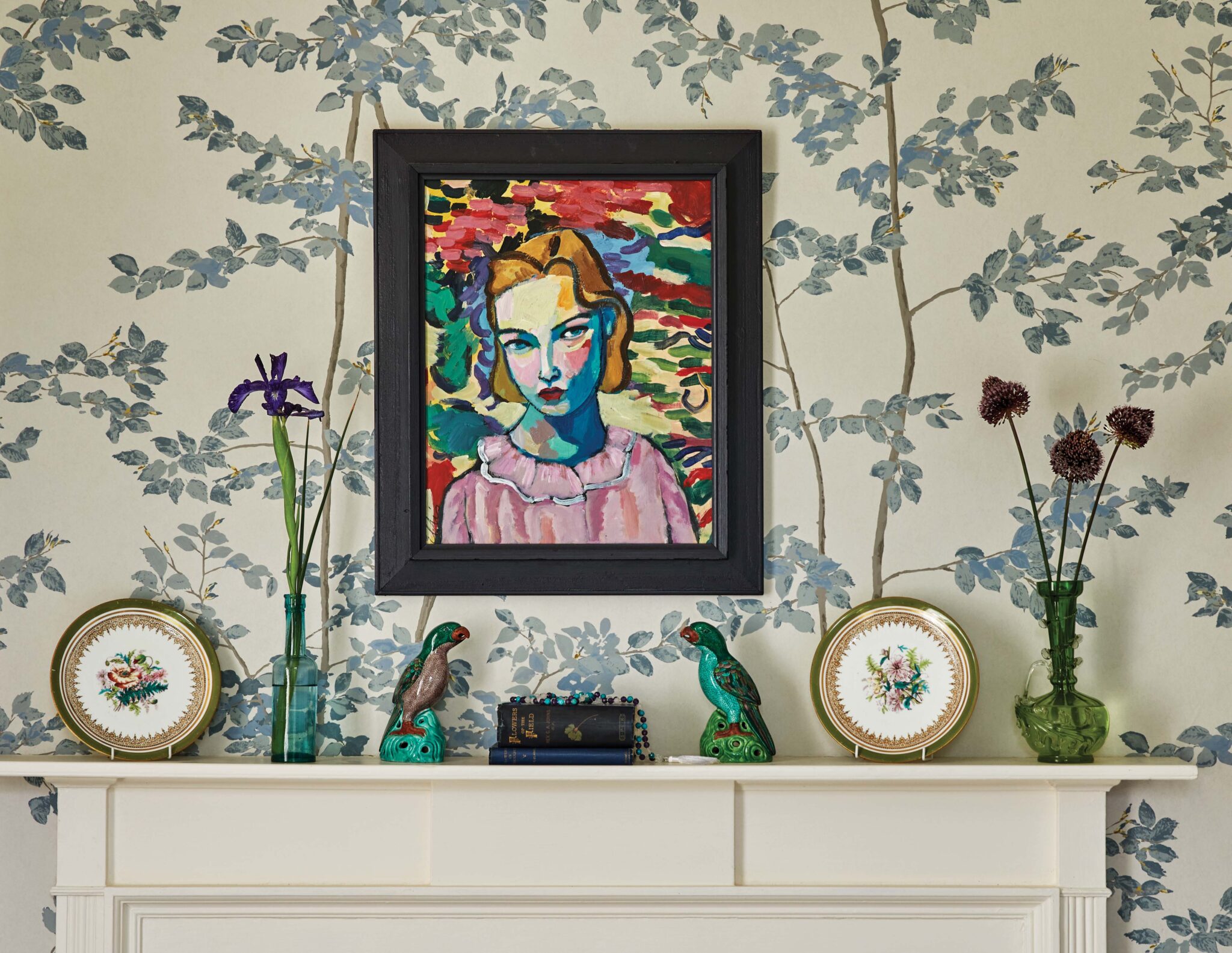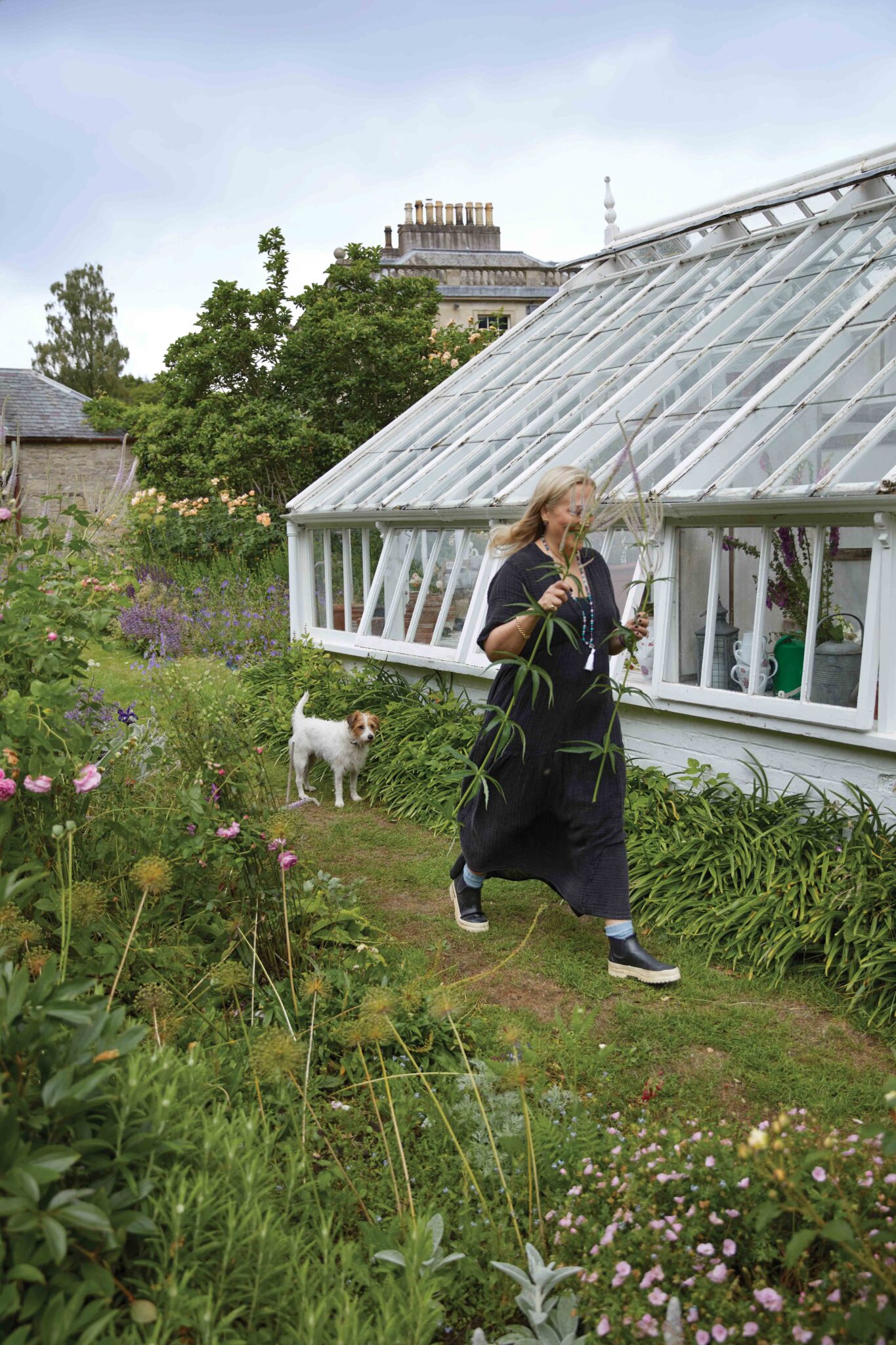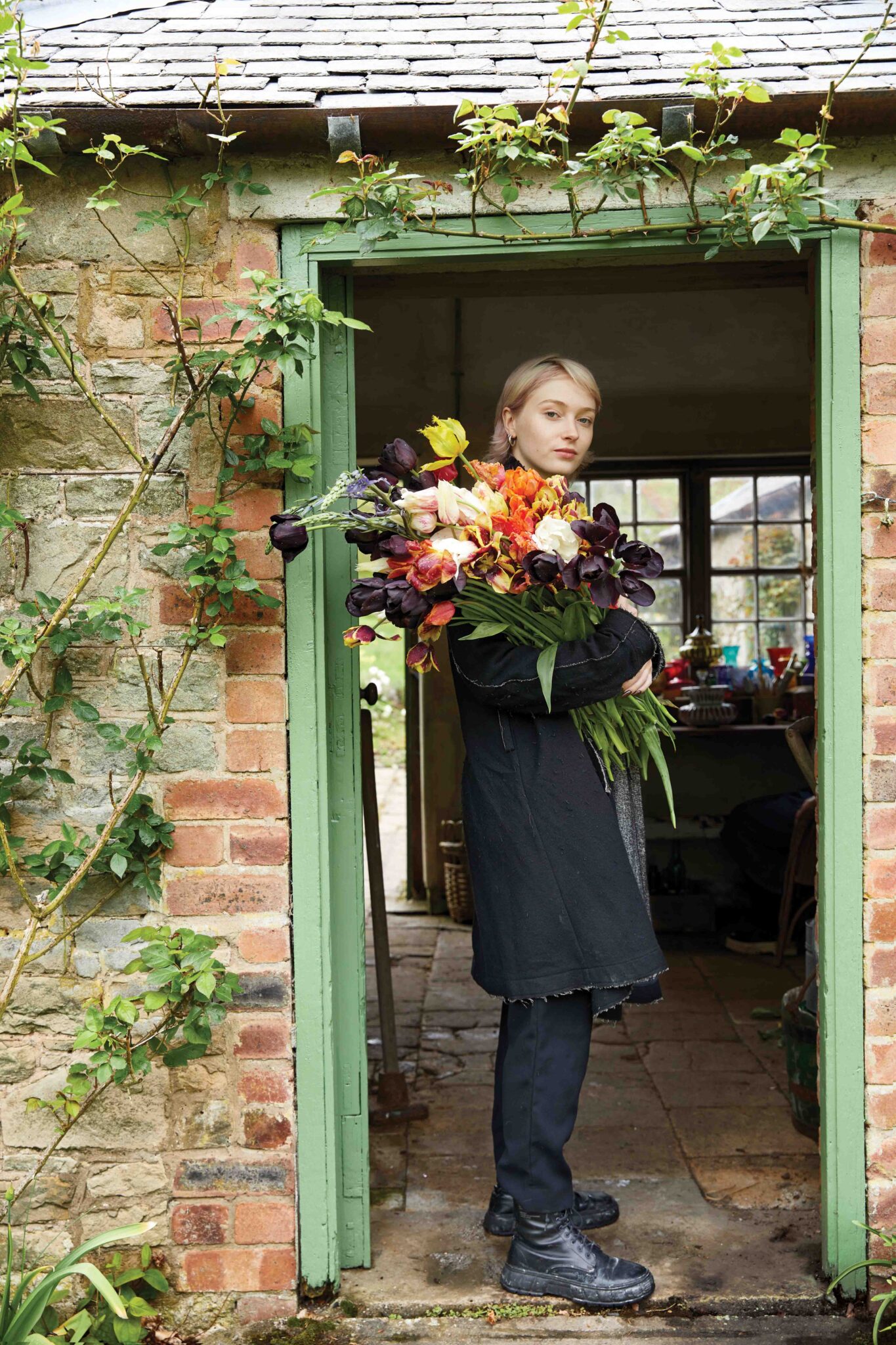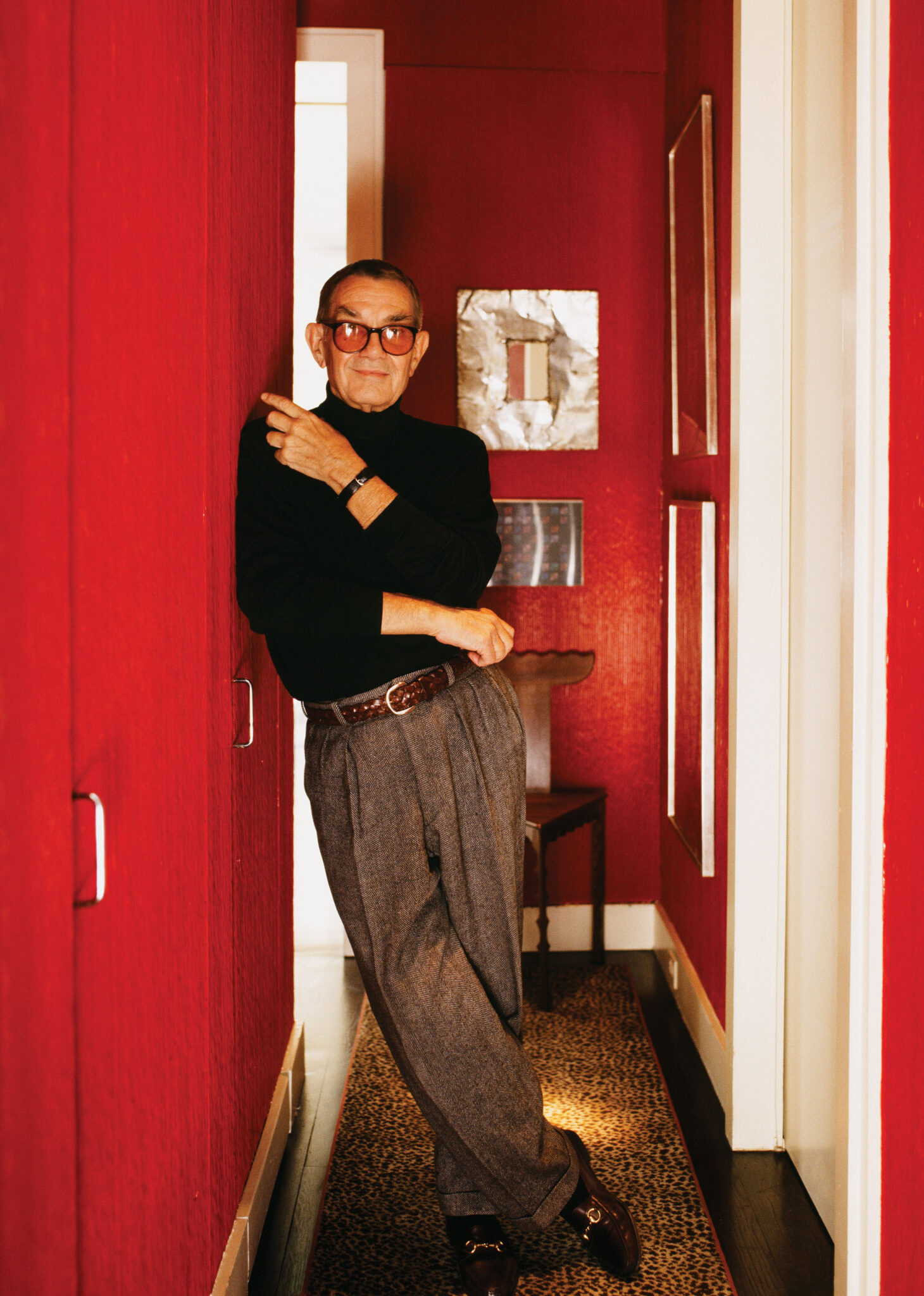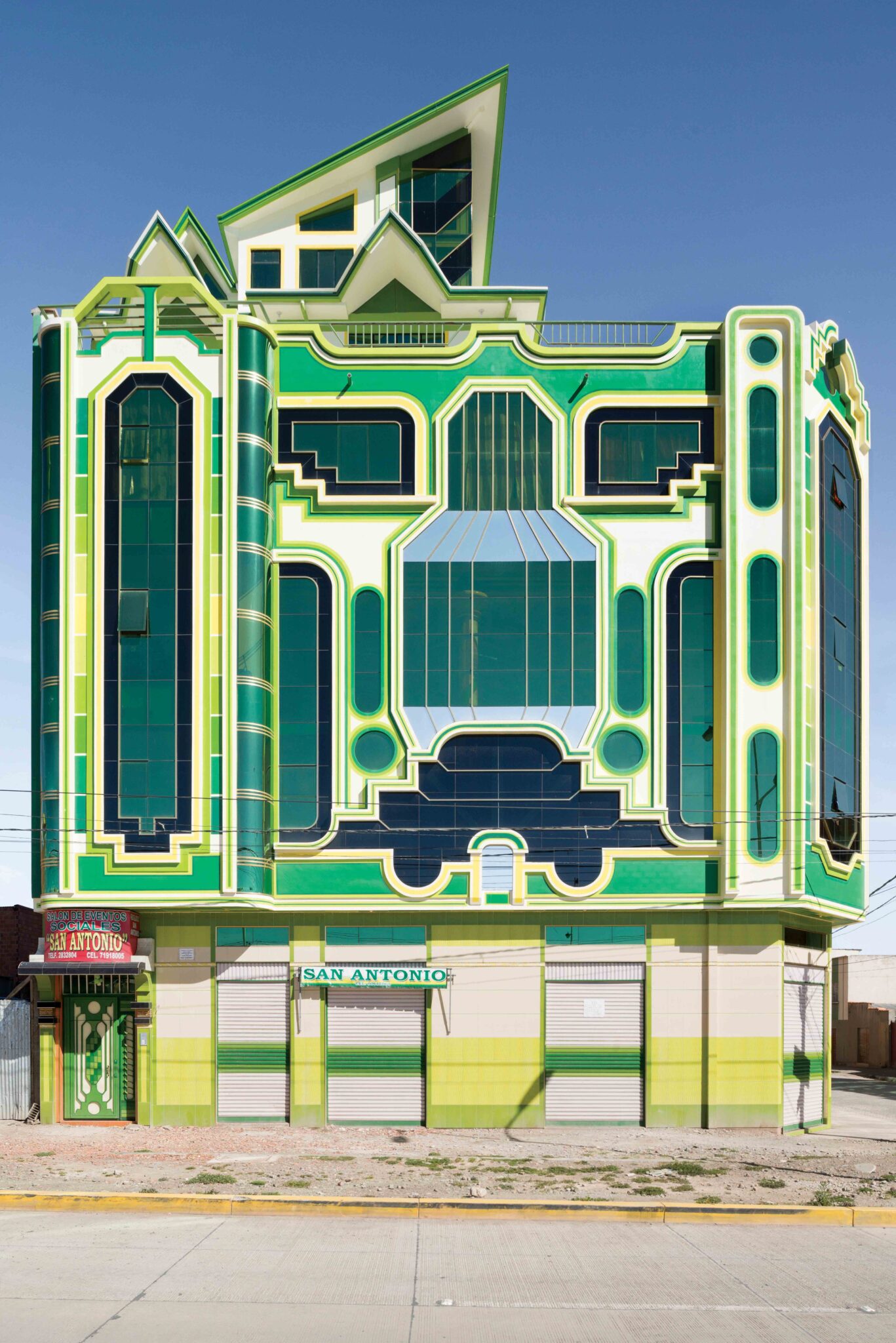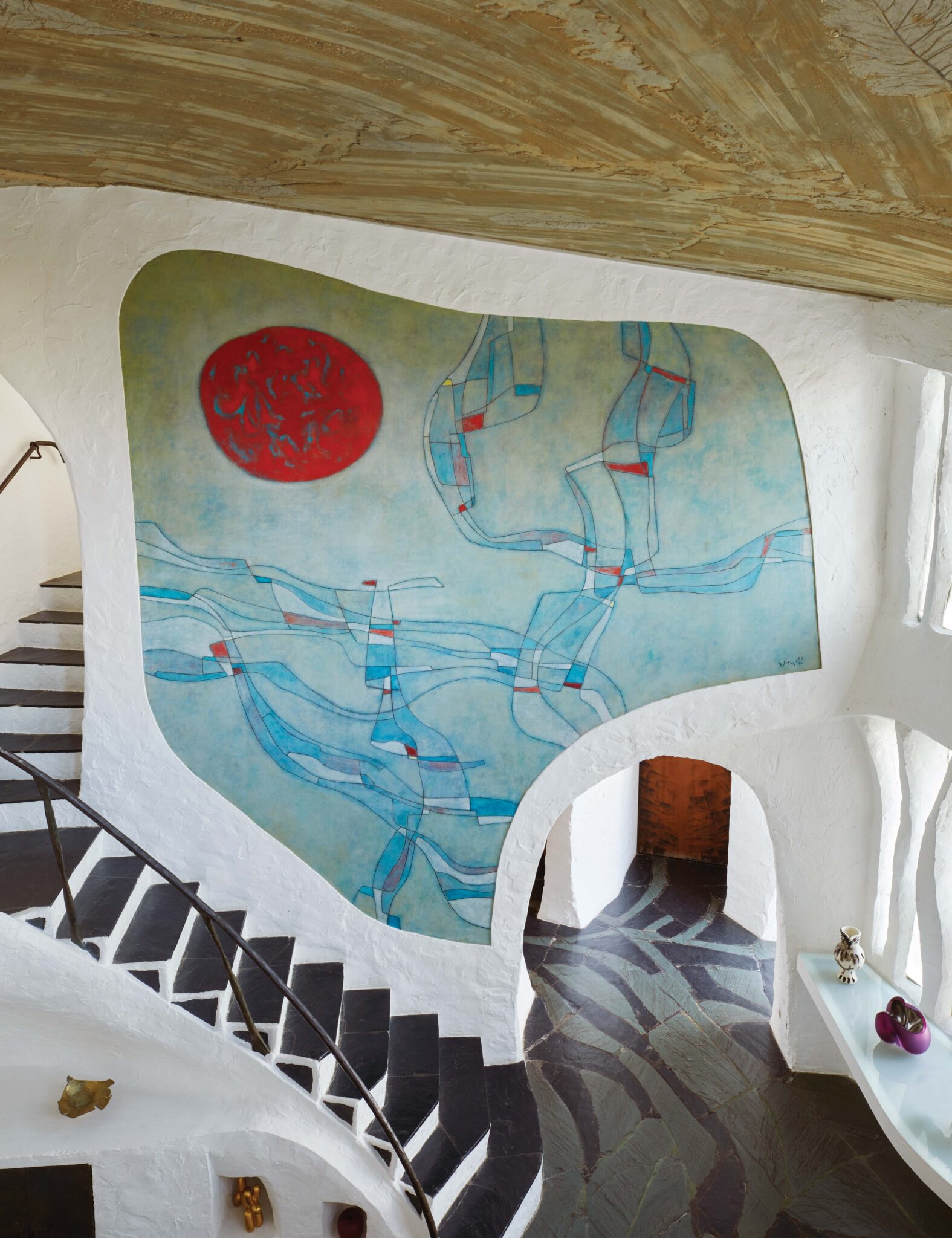Set on the edge of the bucolic Scottish Borders, about an hour’s drive from Berwick-upon-Tweed, Maxine Harrison Sloss’s elegant Georgian country house, Glenburn Hall, is the kind of place that visitors never want to leave. “That only five families have lived here in over 200 years tells you everything,” enthuses the interior designer and passionate campaigner for creativity in schools. “The energy is so lovely because it feels like everyone who has ever lived here has been incredibly happy. When my friends come, they always ask to stay another night.”
-
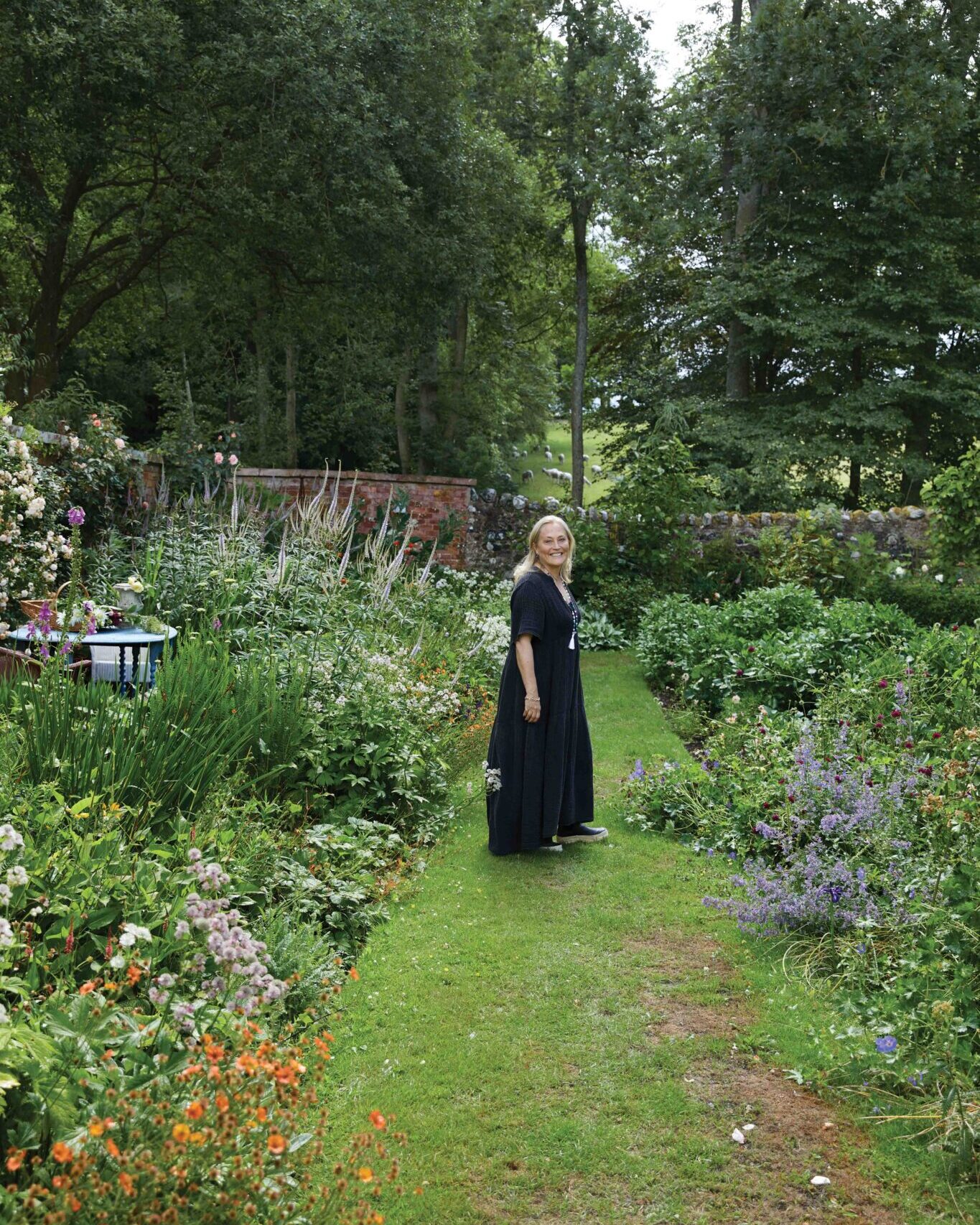
In the walled garden of Glenburn Hall—an early-19th-century estate near Edinburgh owned by decorator Maxine Harrison Sloss and her husband, Robert—a profusion of pollinator-friendly plants bursts forth from the beds. “I’m just nuts about picking flowers,” Sloss says. “I can’t describe how happy it makes me to fill my house—and other people’s homes—with them.”
-
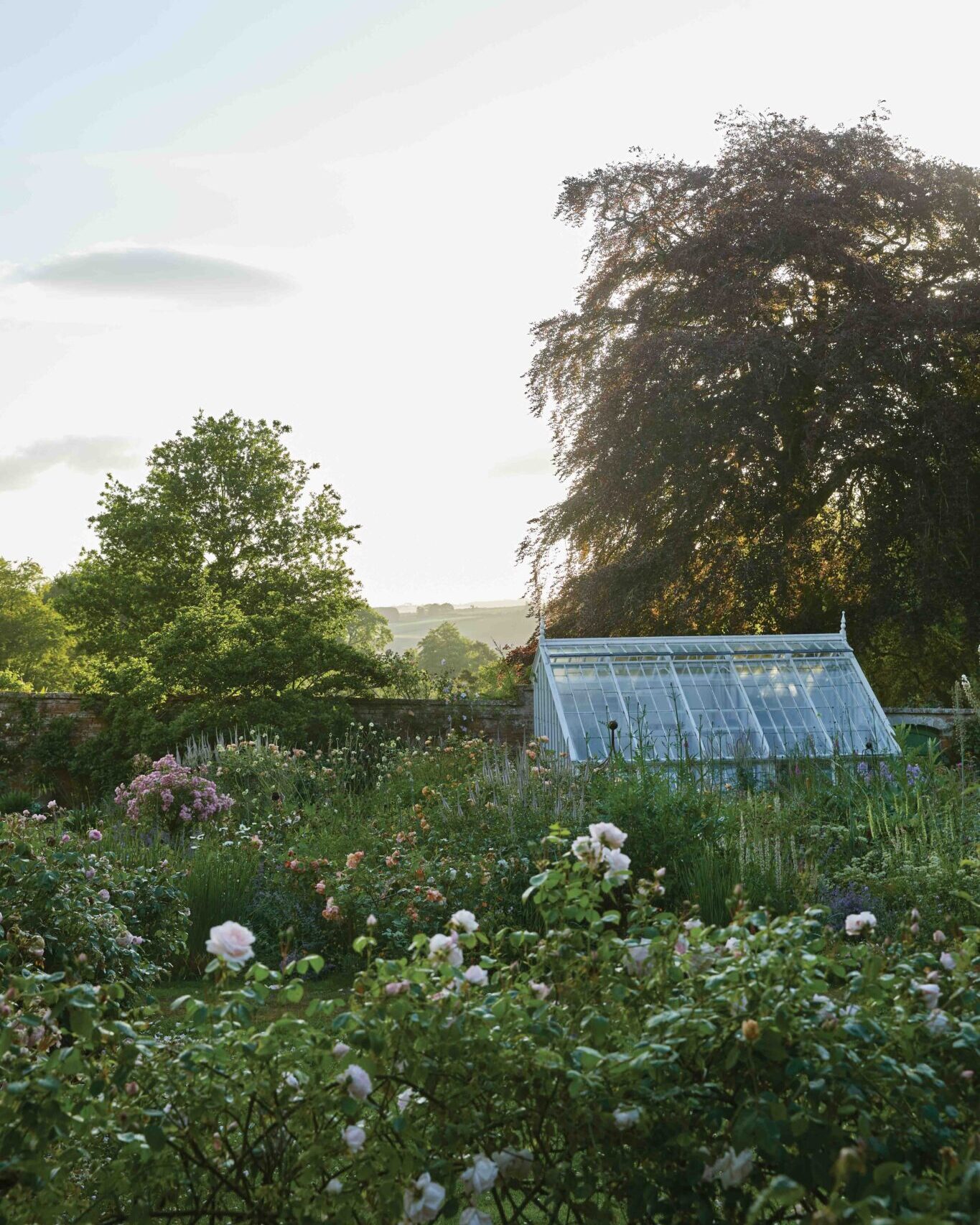
A long, “prodigiously flowering” hedge of ‘Queen of Sweden’ roses grows near the restored greenhouse.
Naturally, much of this is owed to Sloss’s deft hand for creating warm, enticing and intriguing spaces; the effect is one of “somewhere Jane Austen, one of my schoolgirl literary heroines, might have lived,” she says. Throughout her home, she has effortlessly layered a mélange of antique and upcycled, classic and exotic, patterned and patinaed. “I like mixing things together, that’s the beauty of the job to me,” she says of the interior aesthetic she honed working with fabric designer Nicholas Herbert (famous for bringing old document prints back to life) in London, and then for the late David Easton, one of New York’s leading decorators.
Surprisingly, life at Glenburn Hall for Sloss and her husband, Robert, almost never came to pass. “We were living in a townhouse in Edinburgh, where I was very happy because I could get coffee and go for a walk, but Robert really loves nature and conservation, and he was desperate for a garden,” Sloss recalls. “He kept sending me pictures of these basic bothies and strange places in the middle of nowhere, and I just kept thinking, I can’t do that,” she laughs. Luckily, the interior designer Jonathan Reed, one of Sloss’s closest friends, intervened. He knew the family selling Glenburn Hall and insisted she see it. “It’s really enchanting,” he told her.
-
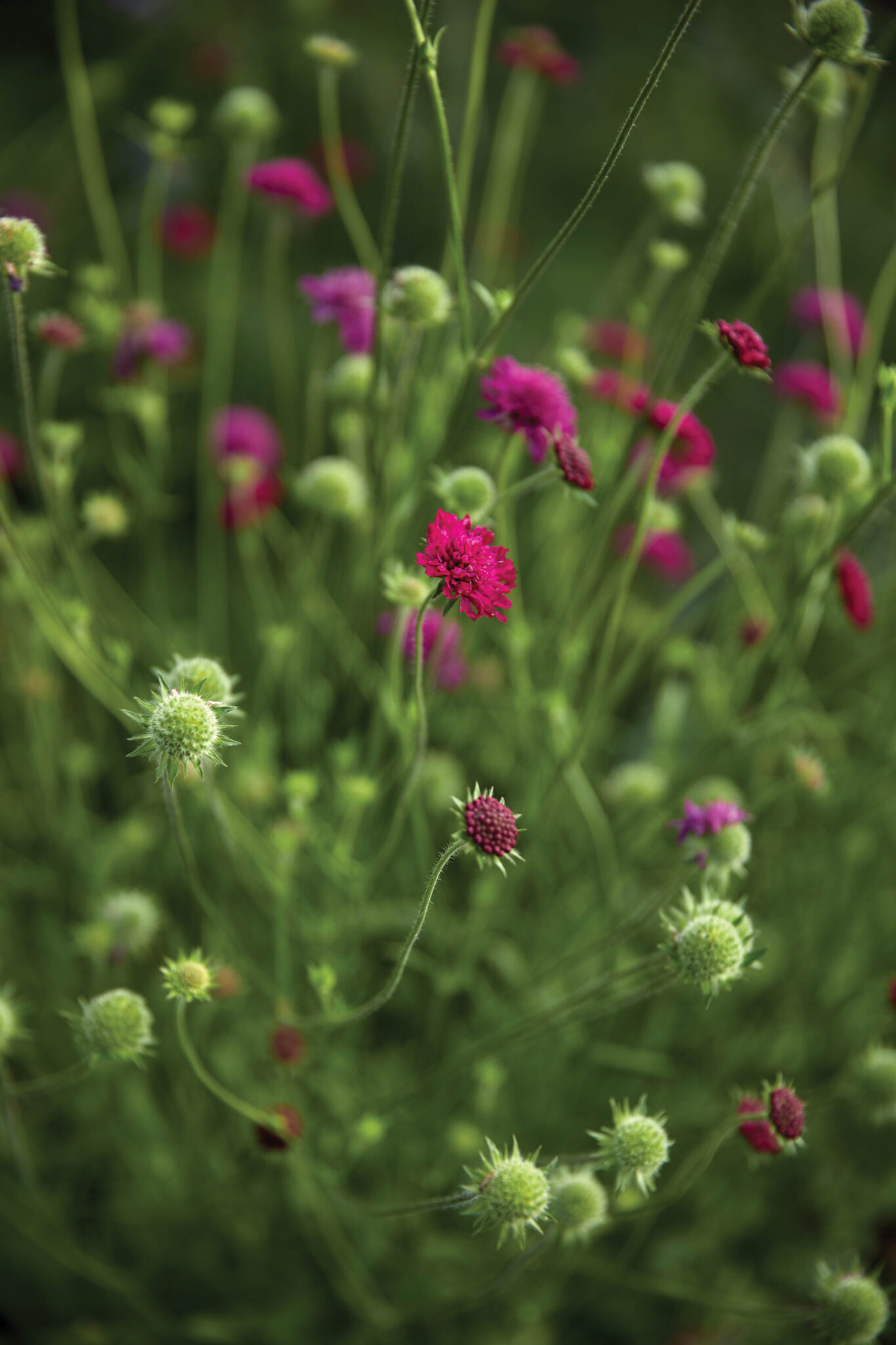
Knautia macedonica (Macedonian Scabious).
-
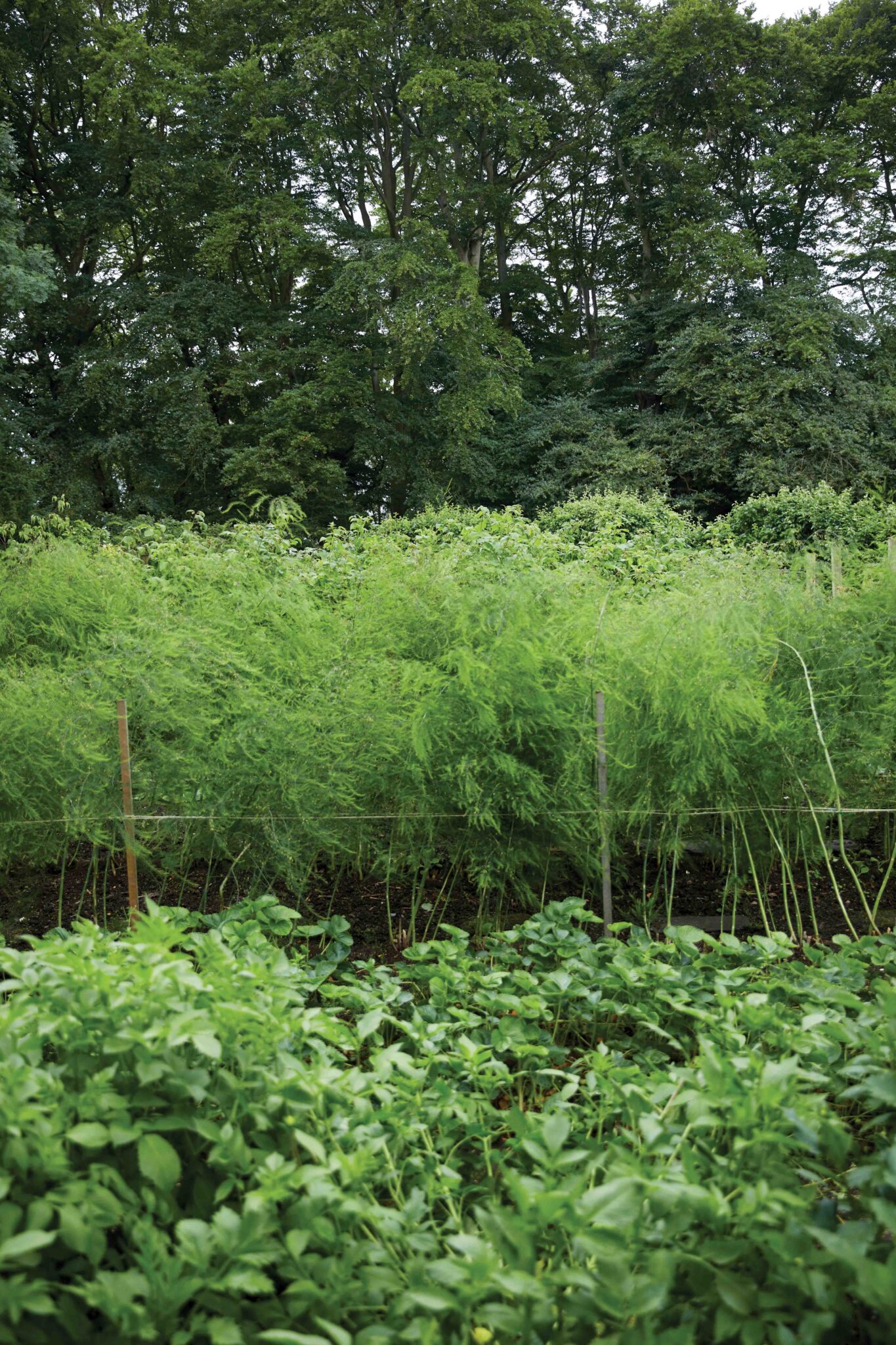
‘Gijnlim’ asparagus grows behind dahlias.
-
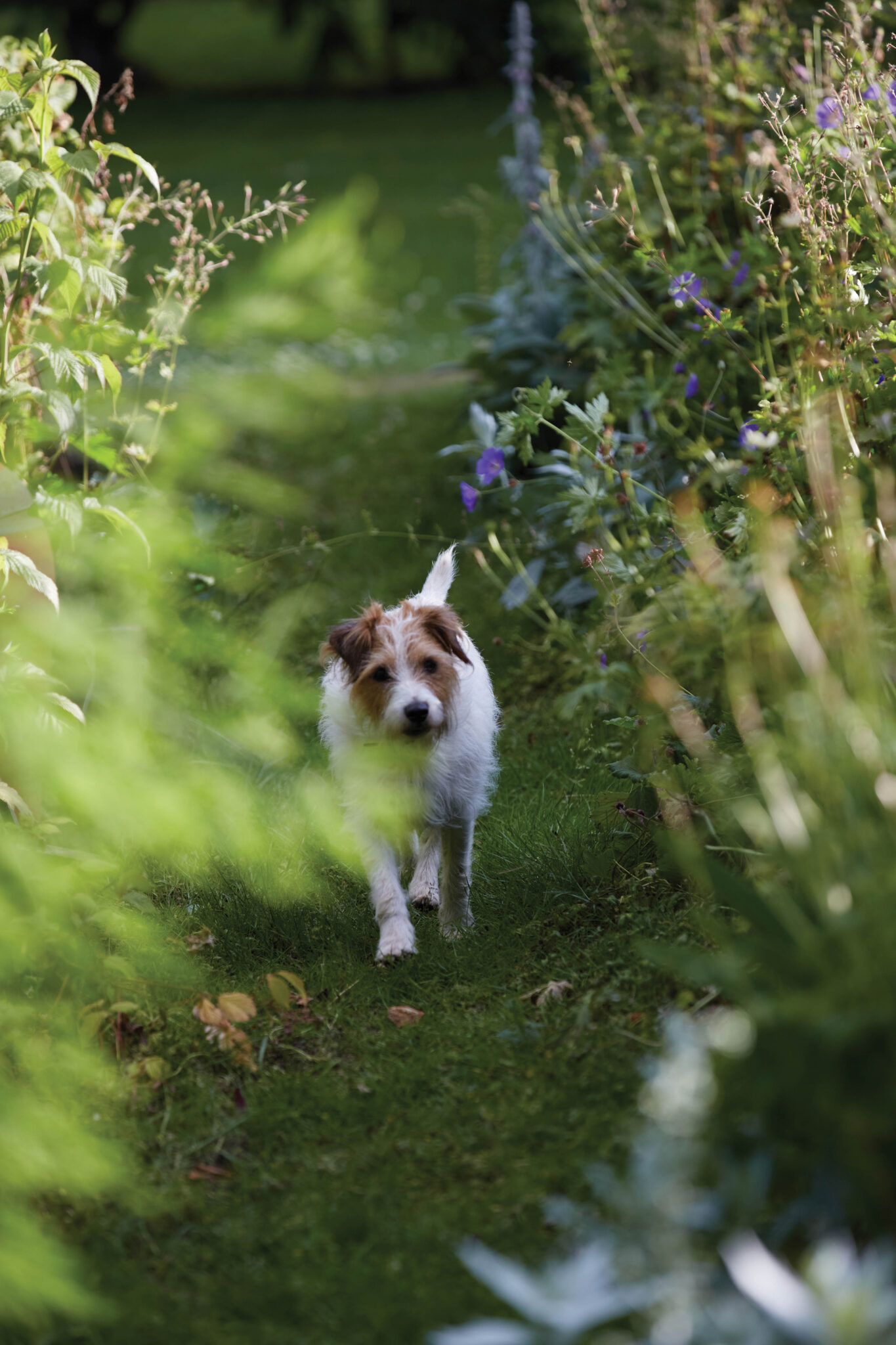
The Slosses’ Parsons Jack Russell is named Orri, after Oransay, an island on the west coast of Scotland.
“I’ve never had such a feeling than when I walked down the drive and felt I’d been there before. It was so beautiful,” Sloss remembers of that fateful day seven years ago. Designed by the celebrated architect William Elliot in 1815, the six-bedroom, three-bathroom house, set within almost 70 acres of gardens and parkland, had been largely restored and modernized by the previous owners, so all it demanded was a sprinkling of Maxine’s colorful, soulful decorative magic across its beautifully proportioned yet intimately scaled rooms.
Discarding the previous owners’ neutral, minimalist design scheme—“I’m definitely a maximalist,” Sloss asserts—she drew inspiration from the vibrant paintings of the Post Impressionist artists known as the Scottish Colourists, including Samuel John Peploe and John Duncan Fergusson. The orange bathroom (“one of my favorite hues—apparently it deflects negative energy”) and restful soft-pink living room (“to help stop the family fighting,” she laughs) have been complemented with pretty wallpapers printed with leafy beech sprigs or William Morris florals (reimagined by British designer Ben Pentreath), which reflect the sway of the seasons playing out across the rolling Cheviot Hills outside.
Antique pendant lanterns, a recamier chaise lounge (reupholstered in a delicate floral block print), and an ottoman sourced from Christopher Howe in London mix with salvaged Art Deco Venetian mirrors, painted 19th-century chairs, and centuries-old Persian rugs, while antique textiles lend “a warmth that catches the eye,” Sloss says. “I’m a big advocate of reusing, recycling, and reimagining. It’s lovely to keep rejuvenating all these beautiful things.”
-
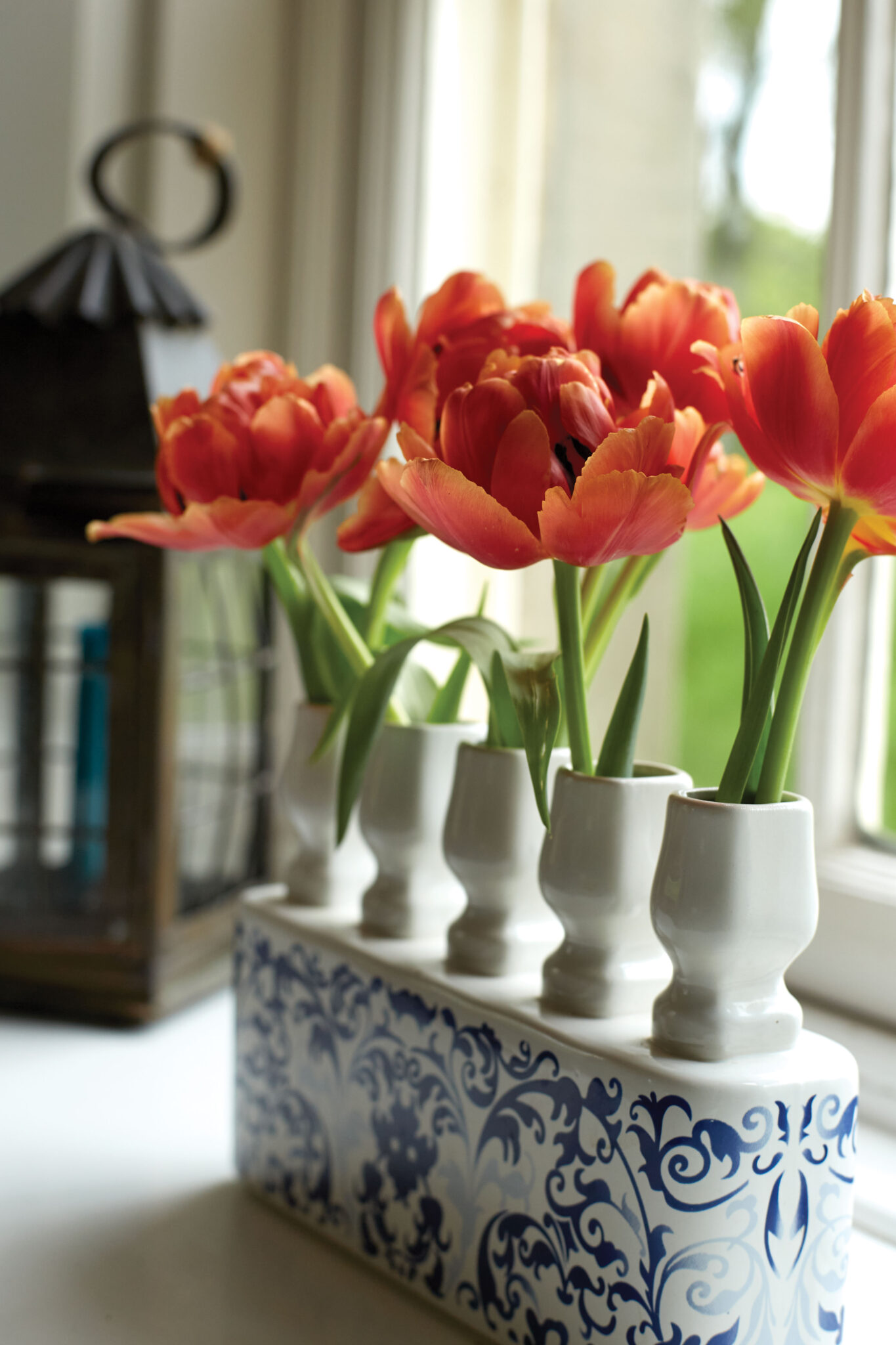
‘Orange Princess’ tulips fill a Delft vase from Marcel Wanders.
-

A vintage vase and a glass bottle from nearby Lindean Mill Glass hold flowers in a kitchen window.
-
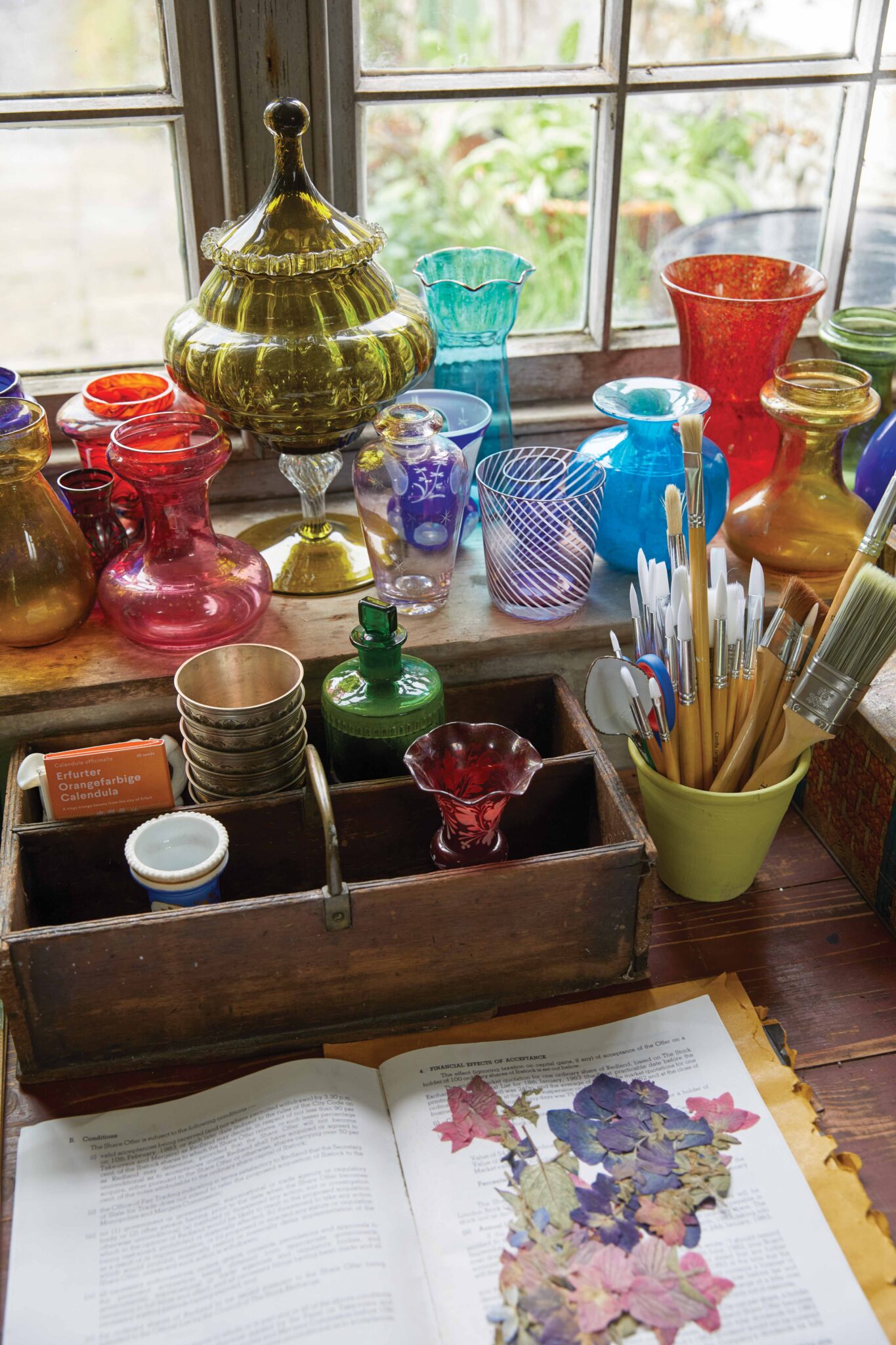
The potting shed has become a creative laboratory for Sloss; the collection of colored glass was begun by her mother.
Meanwhile, in the walled garden, a heavenly scented “riot of color” flows from April to November, where the butterflies and bees appreciate its symphony of purples and pinks, blues and whites, yellows and oranges. Flowering magnolia, copper beech, silver birch, and oak trees frame parterres bursting with a jostle of towering foxgloves, rhododendron, cosmos, and spiky culver’s root, as well as low-lying country garden classics such as bellflowers, Jerusalem sage, and shaggy masterwort. Long-established and newly planted roses—including Robert’s favorite, ‘The Lark Ascending’—climb the old protective walls, while there are “apple trees that must have been there for 150 years,” Sloss says.
-
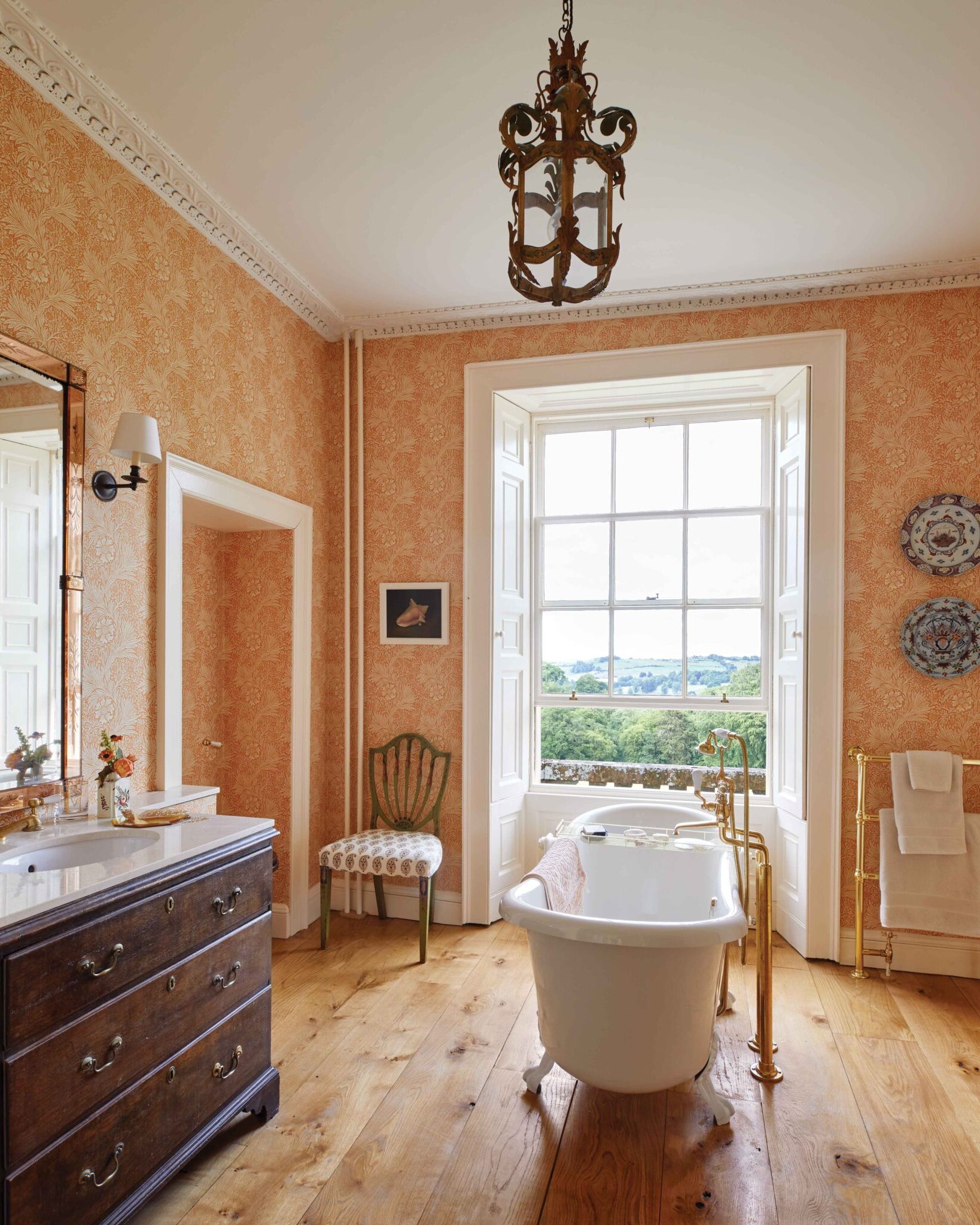
Marigold wallpaper by Ben Pentreath for Morris & Co. brightens a bathroom. The 18th-century Italian pendant is from Howe Antiques, a favorite dealer.
-
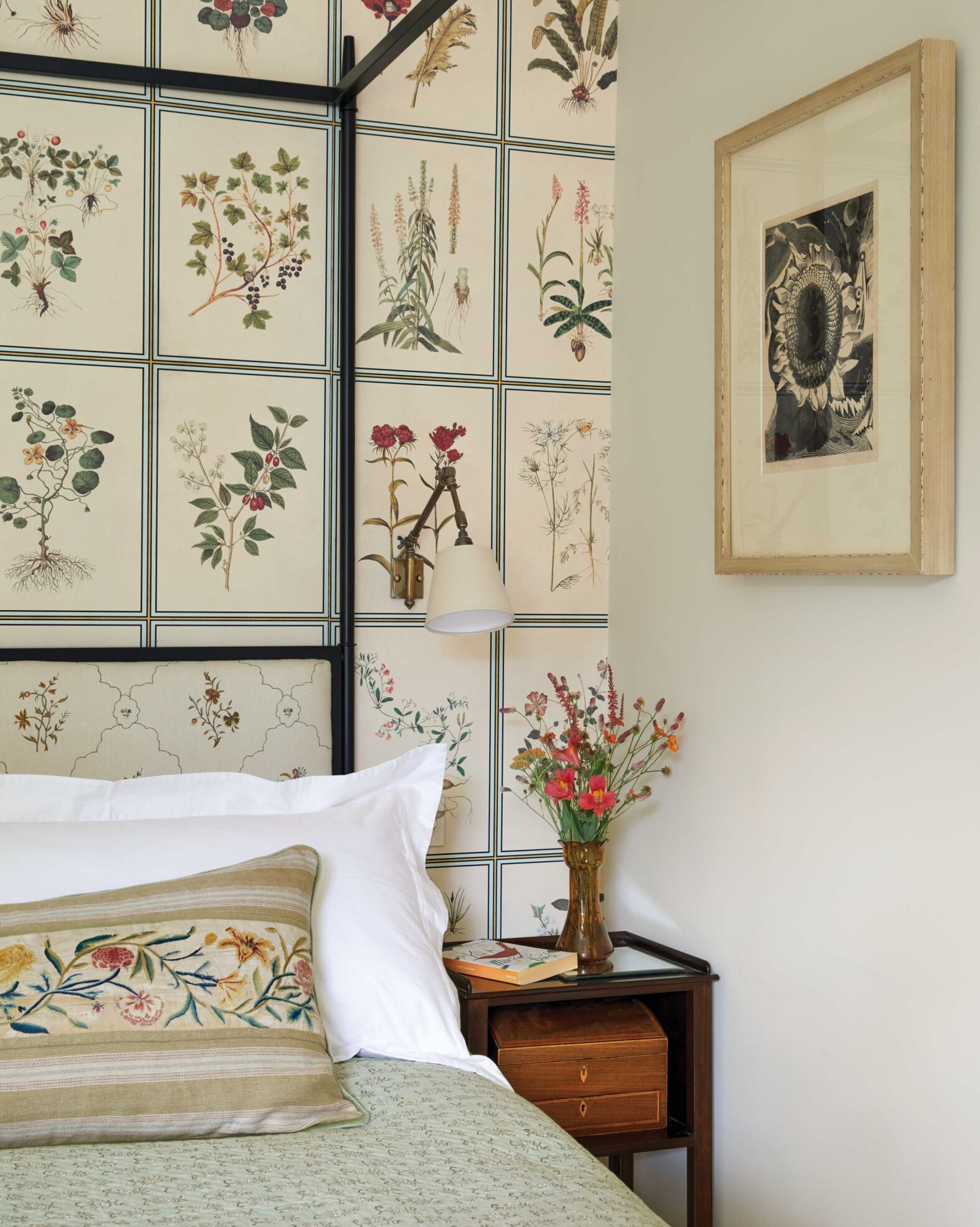
Renaissance Herbier wall panels by Iksel Decorative Arts (available through Schumacher) mimic a collage of antique botanical prints on the guest room wall. Wall light, Robert Kime. Headboard fabric, Soane.
She and Robert restored the charming old greenhouse—“one of the reasons we bought the house,” she says—and now use it to host artists-in-residence, like the rising Scottish painter Lorna Sinclair, who created a series inspired by the garden. Excess produce, especially summer berries, goes to Margaret Lee, the village’s “local legend” jam maker; the result is sold for charity. Likewise, nearly all of the work Sloss takes on these days comes with a philanthropic twist: Fees from her design projects go straight to The Super Power Agency, an organization she founded in 2016 to champion creative writing in under-resourced Scottish schools. Recently, she collaborated with FRD Designers & Makers on a range of lanterns inspired by her late mentor David Easton, who passed away in 2020, with a portion of sales going to the childhood education program at his alma mater, the Pratt Institute in New York.
For Sloss, there has been no shortage of joy to be found in the lessons gleaned over seven years as the steward of Glenburn Hall. “Especially when it comes to the garden, I describe our approach as akin to how we’ve raised our kids—we’re learning and reading as we go, trying to do our best,” she chuckles. “Even the top gardeners can never say they know everything!”

Veronicastrum virginicum ‘Lavendelturm’ (culver’s root), Eremurus x isabellinus ‘Cleopatra’ (foxtail lily), Verbascum chaixii ‘Album’ and ‘Cotswold Queen’ (both varieties of mullein) tower over the garden. “It’s our favorite place to be. I love when friends and family visit and we can have lunches and dinners there,” says Sloss. “To me, it doesn’t get much better than that.”
THIS ARTICLE ORIGINALLY APPEARED IN VOLUME 11 OF FREDERIC MAGAZINE. CLICK HERE TO SUBSCRIBE!
